
Email più intelligenti, business più veloce. Tag automatici, analisi e risposte immediate a richieste, preventivi, ordini e altro.
Guarda in azione
Tendenze
Categories
Notizie di aviazione. Alimentate dall'intelligenza artificiale.
Verificato da ePlane AI
L'intelligenza artificiale verifica i fatti di ogni articolo prima di pubblicarlo.
Ultime notizie
Notizie di tendenza
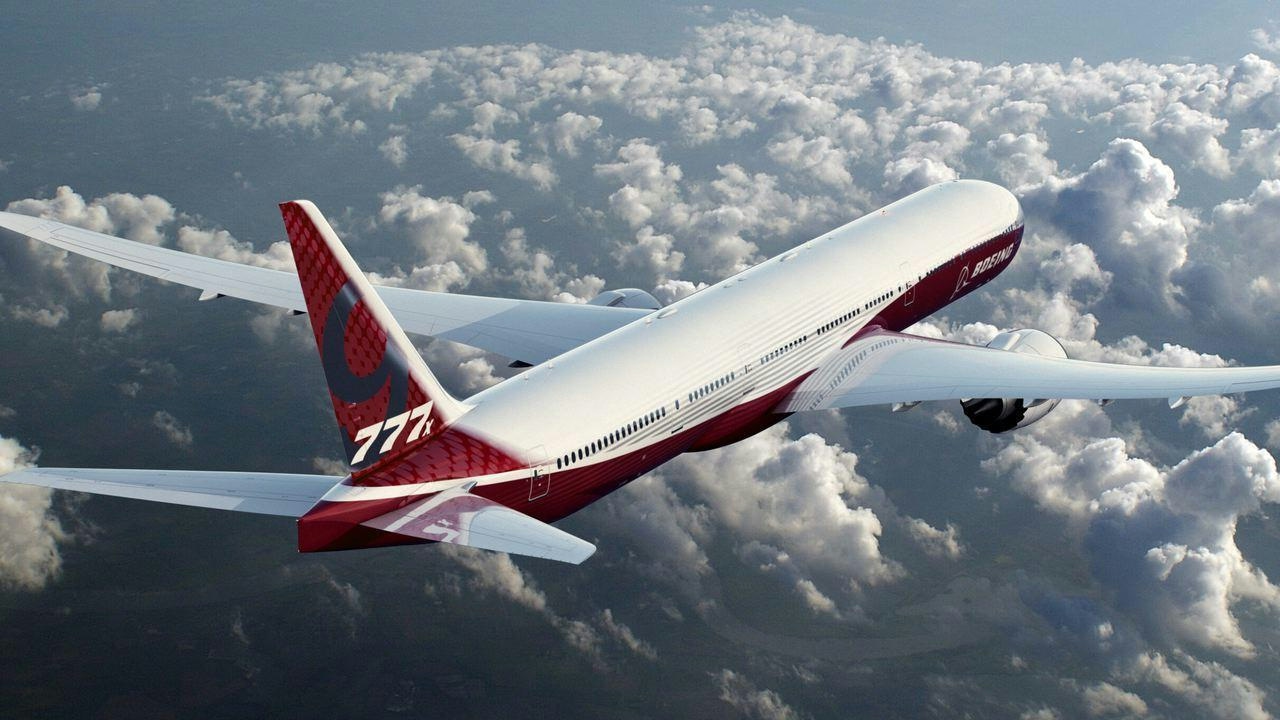
Emirates Confirms Order for Boeing 777X Aircraft
Emirates Reaffirms Commitment to Boeing 777X Aircraft
Emirates, one of the world’s foremost international airlines, has reaffirmed its commitment to the Boeing 777X program, reinforcing its leadership in long-haul aviation. Since its inception in 1985, Emirates has expanded rapidly from its Dubai hub, now serving destinations across nearly every continent with a fleet predominantly composed of widebody aircraft. The airline is the largest operator of the Airbus A380 and a significant user of the Boeing 777, both of which have been central to its global expansion.
Strategic Focus on Widebody Aircraft
Widebody aircraft have remained integral to Emirates’ growth strategy. In its early years, the airline expanded swiftly by wet-leasing Airbus and Boeing jets, quickly establishing routes across Asia, Europe, and the Middle East. By the late 1980s, Emirates had acquired its own aircraft and secured critical slots at major airports, including London Heathrow. The 1990s and 2000s saw further fleet development with the introduction of the Boeing 777 and a landmark commitment to the Airbus A380, solidifying Emirates’ reputation for operating some of the world’s largest and most advanced aircraft.
Currently, Emirates operates a fleet comprising 118 Airbus A380s, ten Boeing 777-200LRs, 119 Boeing 777-300ERs, and eight Airbus A350s. Its order book remains substantial, including 57 additional A350s, 30 Boeing 787 Dreamliners, and more than 200 Boeing 777X aircraft. The 777X is expected to become the cornerstone of Emirates’ future fleet, gradually replacing older 777s and A380s while assuming many of their long-haul routes.
Challenges and Industry Context
The 777X program has encountered significant challenges, notably delivery delays that have impacted Emirates as well as other major carriers such as Cathay Pacific, which recently placed its own 777X order despite similar setbacks. These delays have drawn close scrutiny within the aviation industry, even as Boeing’s commercial aviation division shows signs of recovery. In July, Boeing reported strong delivery figures for its 737 MAX and 787 programs, indicating renewed momentum in its production lines.
In parallel, Boeing has commenced production of the 777-8 Freighter, reinforcing its position in the global air cargo market and providing airlines with additional flexibility as they modernize their fleets. Competitors are closely monitoring how Emirates and other carriers manage the evolving landscape of widebody aircraft deliveries and operational planning.
Despite these uncertainties, Emirates’ substantial order for the 777X underscores its confidence in the aircraft’s ability to support its ambitious growth objectives. As the airline prepares to retire older jets, the 777X is poised to play a pivotal role in sustaining Emirates’ extensive global network and high-capacity operations.
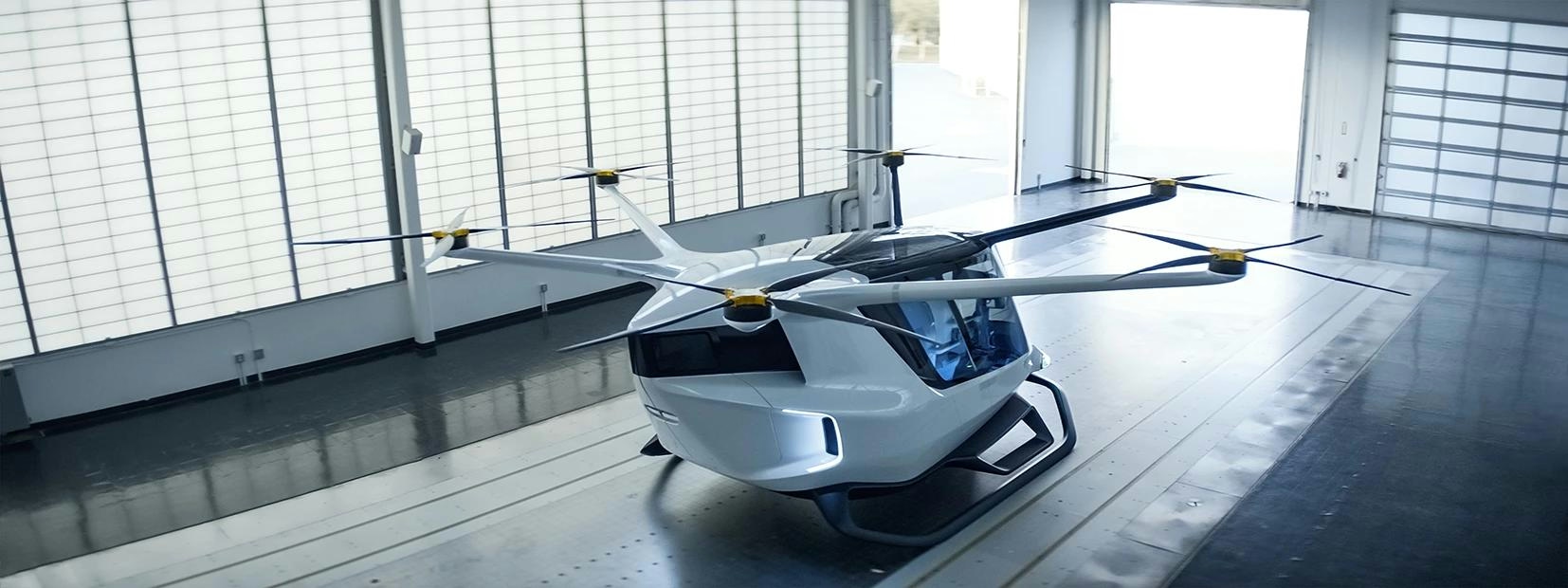
Israel Englander Invests in Leading Flying Taxi Company
Israel Englander Invests in Leading Flying Taxi Company
The Rise of Urban Air Mobility
Flying taxis, formally known as electric vertical take-off and landing (eVTOL) aircraft, are rapidly transitioning from futuristic concepts to tangible solutions in urban transportation. Advances in electric propulsion, battery technology, and autonomous systems have propelled the urban air mobility (UAM) sector into a phase of accelerated growth. Market projections from Flyingcarsmarket estimate the UAM industry will expand from $3.6 billion in 2023 to more than $29 billion by 2030, reflecting a compound annual growth rate of approximately 34%. This surge is driven by the pressing need to ease urban congestion and is supported by substantial investments from both established corporations and emerging startups.
Englander’s Strategic Investment Moves
Billionaire investor Israel Englander, founder of Millennium Management, has emerged as a significant player in this evolving market. Managing assets exceeding $78 billion, Englander’s investment decisions attract considerable attention. His portfolio now includes stakes in two prominent eVTOL developers: Archer Aviation (NYSE: ACHR) and Joby Aviation (NYSE: JOBY). Both companies are pioneering flying taxi technology, each pursuing distinct aircraft designs and commercialization strategies. Recent regulatory filings reveal that Englander has been increasing his holdings in one company while reducing his stake in the other, indicating a strategic recalibration in response to industry dynamics.
Archer Aviation’s Progress and Partnerships
Founded in 2018 and led by CEO Adam Goldstein, Archer Aviation is focused on developing eVTOL aircraft tailored for urban air mobility networks. Although the company has yet to generate revenue, it is advancing steadily toward commercialization. Archer is currently producing six units of its four-passenger Midnight aircraft across facilities in California and Georgia. The company benefits from strong financial and strategic backing, including investments from United Airlines, Stellantis, and the Abu Dhabi Investment Office. In June, Archer secured $850 million in new financing following a White House Executive Order aimed at accelerating eVTOL deployment, increasing its liquidity to around $2 billion. Earlier this year, Archer launched a commercialization initiative in the United Arab Emirates, partnering with Abu Dhabi Aviation and the Abu Dhabi Investment Office. The company also completed its first Middle East test flight in July, demonstrating its aircraft’s capabilities under challenging conditions.
Challenges and Competitive Landscape
Despite promising advancements, the flying taxi sector faces significant challenges. Regulatory approval processes remain complex, technological competition is intense, and questions about consumer acceptance persist. Recent industry developments highlight the competitive environment: Joby Aviation acquired Blade’s air taxi business for up to $125 million and entered a partnership with L3Harris to develop military aircraft. These strategic moves underscore the urgency among competitors to accelerate development, forge alliances, and secure market share in a rapidly evolving field.
Investor interest has grown in response to Englander’s investments and the sector’s momentum, fueling speculation about which companies will ultimately dominate the market. As urban air mobility continues to develop, stakeholders are closely watching strategic decisions, regulatory progress, and technological innovations that will shape the future of this transformative industry.
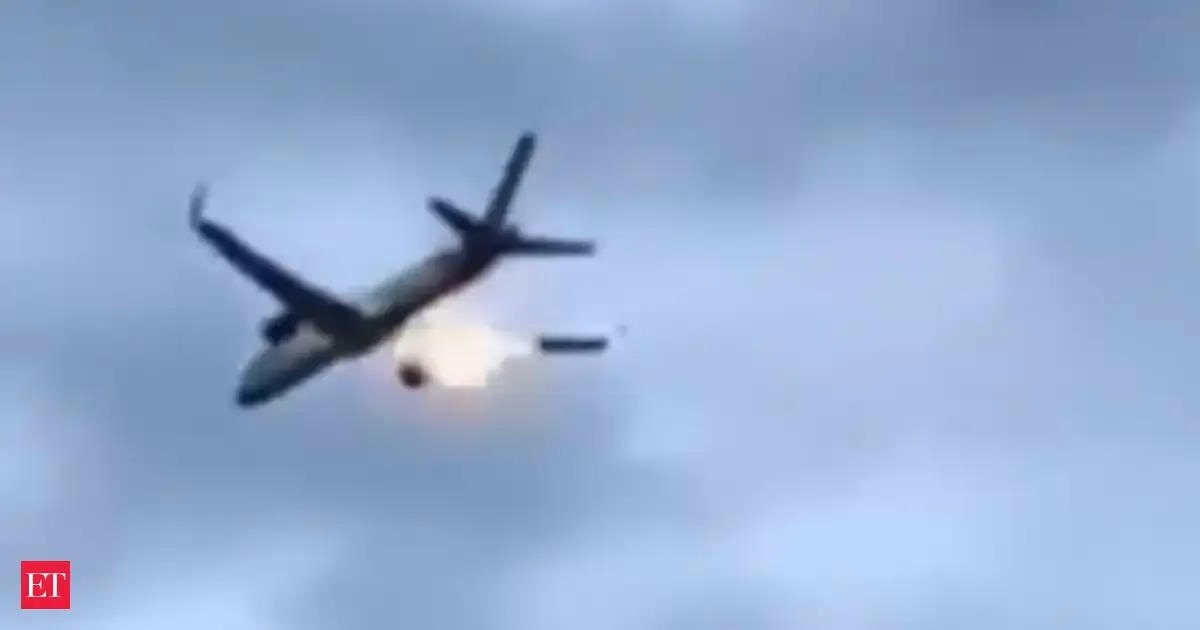
Condor Boeing 757 Engine Catches Fire Mid-Air, Emergency Landing Made with 281 Onboard
Condor Boeing 757 Engine Catches Fire Mid-Air, Emergency Landing Made with 281 Onboard
Engine Fire Forces Emergency Landing in Italy
On August 16, 2025, a Condor Boeing 757 operating flight DE3665 from Corfu, Greece, to Düsseldorf, Germany, was compelled to make an emergency landing in Italy after one of its engines caught fire shortly after takeoff. The aircraft was carrying 273 passengers and eight crew members when the incident occurred. Passengers reported hearing a series of loud blasts as the plane ascended from Corfu International Airport, followed by visible flames erupting from the right engine. The flight crew, alerted by an emergency signal in the cockpit, promptly diverted the aircraft to Brindisi Airport in southern Italy, approximately 205 kilometers from Corfu.
The emergency landing was successfully executed at 8:15 pm local time, with the right engine still ablaze as the plane touched down. All passengers and crew were safely evacuated without any reported injuries. Condor spokesperson Johanna Tillmann explained that the engine fire resulted from a disruption in airflow, which triggered a chemical reaction within the engine. Authorities have launched an investigation to determine the precise cause of the malfunction, examining both technical and procedural factors to prevent future occurrences.
Aftermath and Industry Implications
Following the emergency landing, logistical challenges arose as no replacement aircraft was immediately available. Passengers were required to spend the night in Brindisi, with a substitute plane arriving the next morning, August 17, to complete the journey to Düsseldorf. The incident has drawn increased scrutiny toward both Condor and Boeing, with market analysts noting potential impacts on consumer confidence, insurance claims, and regulatory oversight of safety protocols.
This event follows a similar engine fire incident involving a Delta Airlines Boeing 767 shortly after takeoff from Los Angeles on July 18, 2025. The recurrence of such emergencies has intensified calls within the aviation industry for comprehensive investigations and possible revisions to maintenance and operational procedures. Condor operates the Corfu–Düsseldorf route once weekly, with scheduled departures every Saturday evening. Both the airline and aviation authorities continue to assess the situation, reaffirming their commitment to passenger safety and regulatory compliance as the investigation progresses.
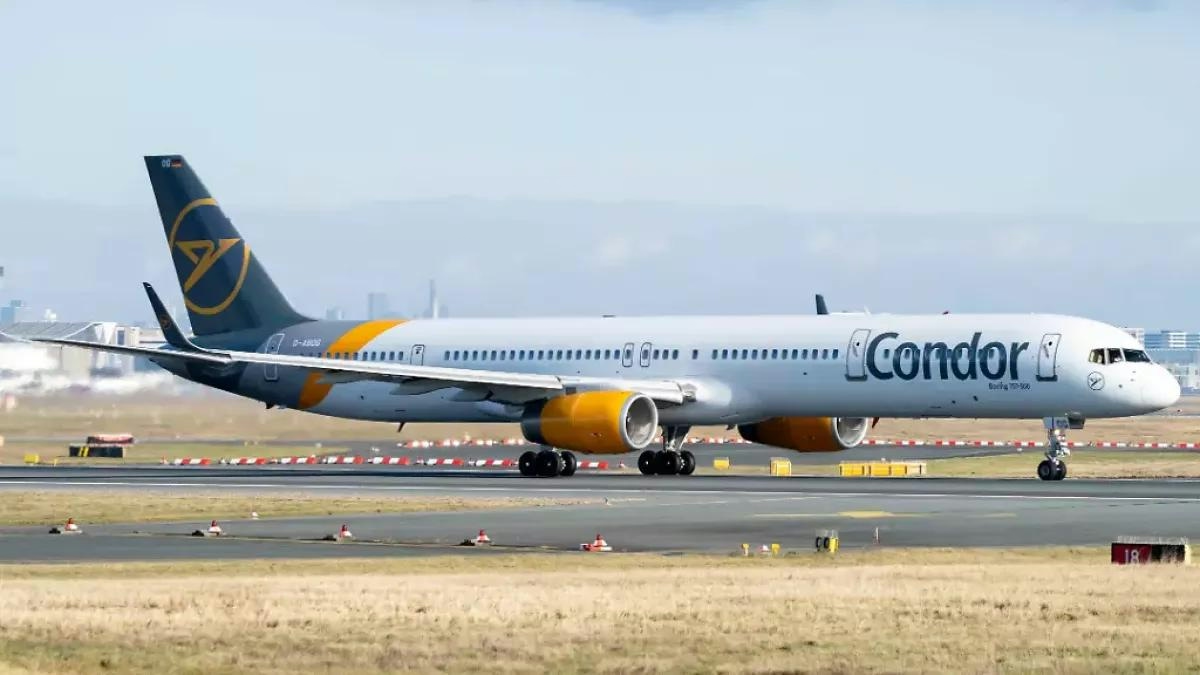
Condor Flight Engine Catches Fire Mid-Air, Emergency Landing in Italy
Condor Flight Makes Emergency Landing in Italy Following Engine Fire
A Condor Airlines flight en route from Corfu to Düsseldorf was compelled to execute an emergency landing in southern Italy after one of its engines caught fire mid-flight, reportedly due to a bird strike. The Boeing 757-330, carrying 273 passengers, departed Corfu International Airport at approximately 8:00 pm local time on Saturday, August 16. Shortly after takeoff, flames were observed emanating from the aircraft’s right engine.
Eyewitnesses reported hearing a loud noise resembling an explosion as the plane flew over the port area at an altitude of around 1,500 feet. Videos recorded by locals and tourists captured sparks and fire shooting from the engine. One such video, shared by the aviation account FL360aero, appeared to show the aircraft passing through a flock of birds, lending credence to the theory that a bird strike precipitated the engine failure.
Response and Aftermath
The flight crew acted promptly, shutting down the affected engine and notifying emergency services at Corfu airport. Although initial reports suggested a possible return to Corfu, the captain decided to continue the journey on a single engine, diverting instead to Brindisi in southern Italy. The aircraft ascended to approximately 8,000 feet before altering course northwest and landing safely in Brindisi, where emergency teams were prepared to respond.
All 273 passengers, predominantly German holidaymakers, were accommodated overnight in local hotels and were scheduled to resume their journey to Düsseldorf the following day. Condor Airlines issued a statement expressing regret for the disruption and reaffirmed that passenger safety remains their foremost priority.
German broadcaster RTL reported that flying directly to Düsseldorf on one engine was not feasible, which influenced the decision to land in Brindisi. The incident underscores the challenges faced by the airline in maintaining passenger and crew safety, conducting a comprehensive investigation into the engine fire, and managing its public image following the emergency.
Industry experts note that such events typically prompt heightened scrutiny of airline safety procedures and may lead to insurance claims. Competitors often respond by reassuring customers and highlighting their own safety standards. As investigations proceed, Condor and relevant aviation authorities are expected to thoroughly examine the circumstances surrounding the suspected bird strike and subsequent engine failure.
For ongoing updates, readers are advised to consult official communications from Condor Airlines and aviation regulatory bodies.

Aviation Expert Richard Godfrey Attributes AI 171 Crash to RAT Deployment, Rules Out Pilot Error
Aviation Expert Richard Godfrey Attributes AI 171 Crash to RAT Deployment, Rules Out Pilot Error
Aviation expert Richard Godfrey has identified the automatic deployment of the Ram Air Turbine (RAT) as the primary cause of the Air India Flight 171 crash in Ahmedabad on June 12, dismissing widespread speculation that pilot error was to blame. In an interview with Geoffrey Thomas, Godfrey examined preliminary findings and data released by the Air Accident Investigation Bureau (AAIB) a month after the London-bound aircraft crashed, resulting in the deaths of all but one passenger.
Timeline and Key Findings
The AAIB’s preliminary report outlines a rapid sequence of events on the day of the crash. At 1:13 pm, the aircraft requested pushback and startup clearance, followed by Air Traffic Control (ATC) confirming the need for the full length of Runway 23 at 1:19 pm. Taxi clearance was granted at 1:25 pm, and by 1:33 pm, AI 171 was instructed to line up for takeoff. The flight was cleared for takeoff at 1:37 pm, but just two minutes after liftoff, the pilots issued a MAYDAY call before the aircraft crashed seconds later.
The report highlights that both engines shut down within one second of each other after the fuel supply was cut off. Cockpit voice recordings captured one pilot questioning the other about the engine shutdown, with the second pilot denying any action to cut the engines. Examination of the engines recovered from the crash site revealed they were in the “Run” position, and attempts had been made to relight them.
RAT Deployment and Technical Analysis
Godfrey’s detailed analysis, drawing on the preliminary report, flight data, and airport CCTV footage, revealed that the RAT was automatically deployed at approximately 1:38:47 pm. According to the data, both engines’ N2 values dropped below minimum idle speed at this time, triggering the RAT hydraulic pump to supply hydraulic power. The preliminary report included an image showing the RAT in its extended position but did not clarify the timing or cause of its deployment.
By synchronizing multiple data sources—including the flight data recorder (FDR) and ATC logs—Godfrey established that the RAT deployment occurred mere seconds before the crash. This timing strongly suggests a technical malfunction rather than any human intervention.
Conflicting Interpretations and Ongoing Investigation
Despite Godfrey’s findings, the investigation has been marked by conflicting interpretations. Some experts, including Captain Byron Bailey, have proposed the possibility of deliberate pilot action, even suggesting “suicide by the pilot” as a theory. However, Godfrey’s analysis, supported by the available data, firmly disputes this notion, attributing the crash to a technical failure centered on the RAT deployment.
In response to the incident, the U.S. Federal Aviation Administration (FAA) and Boeing reviewed the safety of fuel cutoff switch locks, which had come under scrutiny during the investigation. Both organizations have since affirmed the safety of these components.
The investigation into the AI 171 crash remains ongoing, with authorities yet to issue a definitive conclusion. For now, Godfrey’s assessment shifts the focus away from pilot error, underscoring the critical role of the RAT deployment in the tragic sequence of events.

Iranian Technicians Overhaul BK 117 Helicopter Engine
Iranian Technicians Achieve First Domestic Overhaul of BK 117 Helicopter Engine
Iranian technicians have completed the first-ever full overhaul of the BK 117 helicopter engine within the country, marking a significant advancement for Iran’s aviation sector amid ongoing international sanctions. The accomplishment was announced by Hossein Pourfarzaneh, Iran’s civil aviation chief, who emphasized that this milestone reflects years of dedicated and complex work by local experts.
Overcoming Sanctions Through Domestic Expertise
The decision to pursue domestic overhaul capabilities arose after foreign manufacturers, located in countries enforcing sanctions, declined to cooperate and even confiscated engines sent abroad for maintenance. Pourfarzaneh underscored the strategic importance of developing local repair and manufacturing capacities, noting that engines constitute a major portion of an aircraft’s value and that such capabilities are vital to sustaining the national aviation economy.
The BK 117, a medium-sized, twin-engine helicopter produced jointly by Kawasaki Heavy Industries and Airbus Helicopters, is widely utilized for emergency services. The overhaul was conducted by MAPNA, an Iranian engineering firm recognized for its work on advanced technological projects. Iranian technicians faced significant challenges, particularly in sourcing parts and technologies restricted by sanctions. These obstacles compelled engineers to devise innovative solutions and rely heavily on domestic manufacturing, demonstrating both technical resilience and Iran’s commitment to maintaining and expanding its aviation fleet despite external pressures.
Broader Implications for Iran’s Aviation Sector
This development occurs amid cautious market reactions, with some investors expressing concern that Iran’s increasing self-sufficiency in aviation maintenance could disrupt global supply chains further. Additionally, international regulators and competitors may respond with heightened scrutiny of Iranian aviation capabilities, potentially resulting in stricter regulations or expanded embargoes on Iranian aviation products.
Despite these challenges, Iran has sustained its aviation operations and even extended maintenance services to foreign carriers. Notably, last year Russia’s largest airline, Aeroflot, reportedly sent a Western-made jet to Iran for repairs. Furthermore, in late 2024, Iranian authorities announced that domestic experts had mastered the technology to manufacture spare parts for Boeing and Airbus jet engines.
As Iran continues to navigate the complexities imposed by international sanctions, the successful overhaul of the BK 117 engine highlights the technical proficiency of its engineers and underscores the broader economic and geopolitical ramifications for the region’s aviation industry.
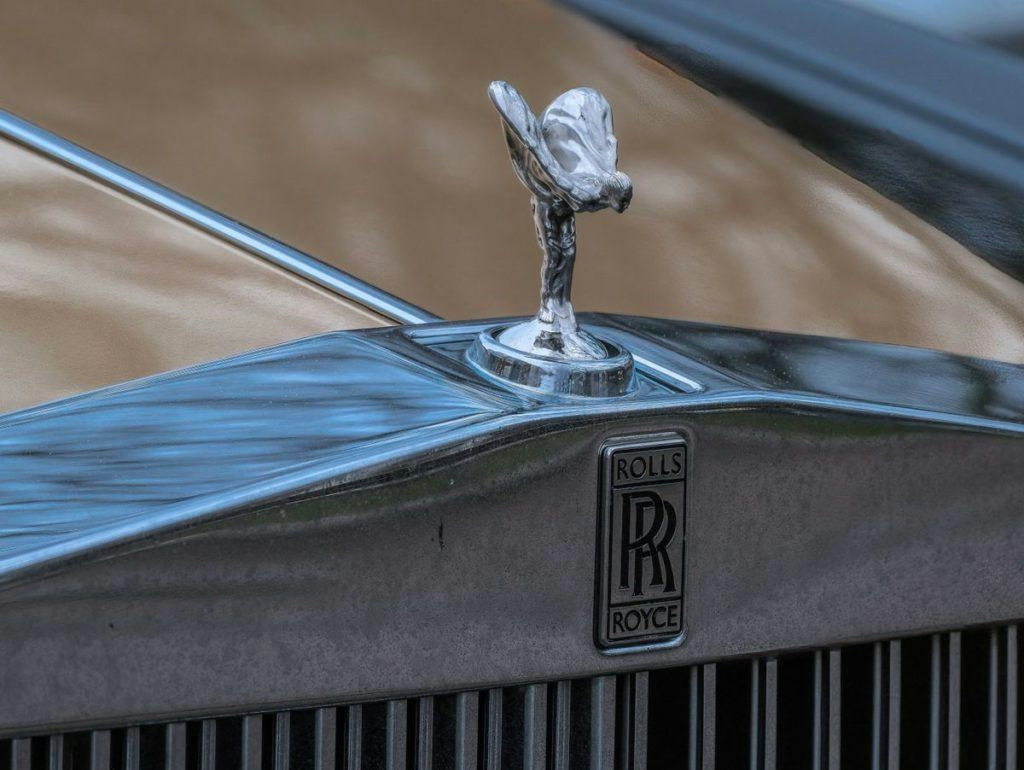
Rolls-Royce Marks End of an Era in Aviation Innovation
Rolls-Royce Marks End of an Era in Aviation Innovation
After two decades of pioneering advancements in aviation technology, Rolls-Royce has announced the retirement of its iconic Boeing 747-200 Flying Test Bed (FTB) N787RR. Since its introduction in 2005, this uniquely modified aircraft—equipped to operate with five engines—has been instrumental in the development and testing of next-generation propulsion systems, including the Trent 1000 and Pearl 10X engines.
A Legacy of Innovation and Sustainability
The Flying Test Bed has been central to several historic milestones in aviation. Notably, in 2021, it became the first aircraft to fly a Trent 1000 engine powered entirely by 100% sustainable aviation fuel. This achievement played a crucial role in the certification of a durability enhancement package designed to more than double engine time on wing, significantly improving engine longevity and efficiency. The aircraft’s final mission, completed in July 2025, supported the Advanced Low Emissions Combustion System (ALECSys) engine demonstrator, marking a key advancement toward more efficient and environmentally sustainable aviation technologies.
John Knight, Director of Test & Experimental Engineering at Engine Test & Services (ET&S), reflected on the aircraft’s contribution: “With more than 2,000 hours of testing under its belt, the Flying Test Bed has been a workhorse for us over the last 20 years, helping us push the boundaries on engine development. Whilst we say a fond farewell to our Queen of the Skies, we continue to innovate in testing with a combination of flying test beds, ground testing, and advanced digital modelling.”
Strong Performance and Future Outlook
The retirement of the Flying Test Bed coincides with a period of robust financial performance for Rolls-Royce. The company recently reported a 50% increase in profits, driven by strong demand for its jet engines and power generators. This financial momentum has propelled Rolls-Royce’s share price to record highs, following an upward revision of its guidance and underscoring the effectiveness of its ongoing turnaround strategy.
Looking forward, Rolls-Royce remains confident in its position within the narrowbody aircraft engine market. CEO Tufan Erginbilgic has expressed optimism about the company’s competitive standing and highlighted ongoing efforts to advance digital solutions aimed at enhancing aircraft availability and performance. These initiatives reflect Rolls-Royce’s commitment to delivering customer-focused service offerings while maintaining its leadership in engineering excellence.
As Rolls-Royce retires the Flying Test Bed, the company continues to integrate its rich heritage with a forward-looking approach centered on sustainability and digital innovation, ensuring its continued prominence in the evolution of aviation technology.
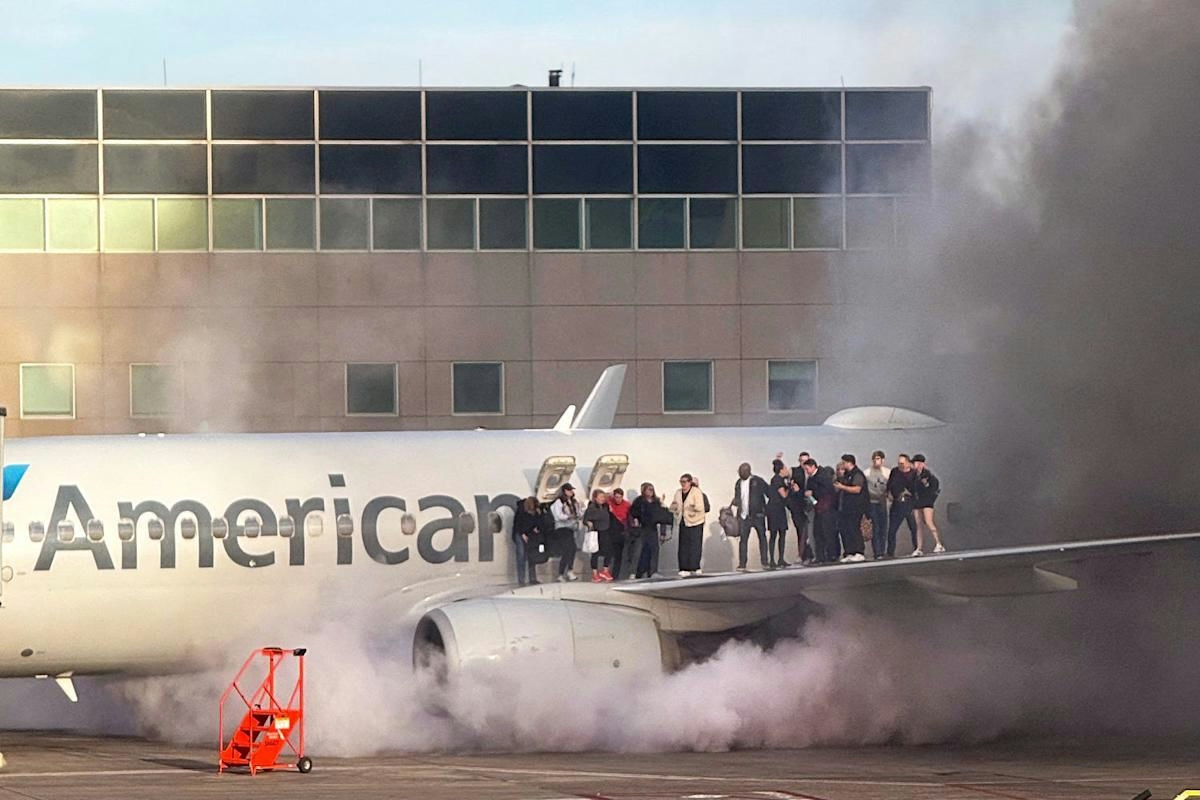
Boeing 757 Engine Catches Fire Mid-Flight, Emergency Landing Strains Local Accommodations
Boeing 757 Engine Fire Forces Emergency Landing in Italy
A Condor Airlines Boeing 757 en route from Corfu, Greece, to Düsseldorf, Germany, experienced a critical engine fire on Saturday, compelling an emergency landing in southern Italy. The incident occurred at approximately 36,000 feet when flames erupted from the aircraft’s right engine, prompting immediate action from the flight crew. All 273 passengers and eight crew members were safely evacuated after the plane diverted to Brindisi Airport. Passengers described the event as terrifying, with one recounting the moment they feared for their lives.
Aftermath and Broader Safety Implications
While the emergency landing ensured the safety of those on board, the situation was exacerbated by logistical challenges on the ground. A shortage of hotel accommodations in Brindisi forced many passengers to spend the night at the airport, highlighting the strain such unexpected diversions place on local infrastructure and resources.
This incident adds to a growing list of concerns surrounding Boeing’s aircraft safety and reliability. Recent reports of engine fires and emergency landings involving Boeing planes have intensified scrutiny from regulators, airlines, and the traveling public. The company’s manufacturing and maintenance practices are under close examination as the aviation industry grapples with these safety questions. Boeing’s stock has experienced volatility amid these developments, while competitors have leveraged the opportunity to promote their own safety records and technological innovations.
As investigations into the engine fire continue, the aviation community remains focused on Boeing’s response and the broader implications for industry standards. For the passengers aboard Flight DE1779, the event underscored the inherent unpredictability of air travel and reinforced the critical importance of stringent safety protocols.

How the Boeing 777-300ER Compares to the Airbus A380 in Size
How the Boeing 777-300ER Compares to the Airbus A380 in Size
When discussing the largest commercial aircraft in operation today, the Boeing 777-300ER and the Airbus A380 are the two dominant models. Each represents a significant achievement in aerospace engineering but caters to different operational needs and market demands. Their differences in size, passenger capacity, and intended use highlight the distinct roles they play within global aviation.
Size and Capacity: A Detailed Comparison
The Airbus A380 holds the distinction of being the largest passenger airliner ever constructed. Its unique double-deck design enables it to accommodate up to 853 passengers in an all-economy configuration, or approximately 575 passengers in a more typical three-class layout. By contrast, the Boeing 777-300ER, the largest variant within the 777 family, can seat a maximum of 550 passengers in a high-density arrangement, though it more commonly carries around 396 passengers in a three-class configuration.
Physically, the A380 exceeds the 777-300ER in nearly every dimension except length. The 777-300ER measures 242 feet 4 inches (73.9 meters) in length, slightly longer than the A380’s 238 feet 7 inches (72.7 meters). However, the A380’s wingspan extends to 261 feet 8 inches (79.8 meters), significantly wider than the 777-300ER’s 212 feet 7 inches (64.8 meters). The A380 also stands taller at 79 feet (24.1 meters), compared to the 777-300ER’s height of 61 feet (18.5 meters). In terms of maximum takeoff weight, the A380’s 1,234,600 pounds (560,000 kilograms) far surpasses the 777-300ER’s 775,000 pounds (351,534 kilograms). These dimensions underscore the A380’s dominance in size and capacity, despite the 777-300ER’s advantage in length.
Operational Roles and Market Positioning
The Boeing 777-300ER was engineered to serve long-haul routes with a focus on operational efficiency and flexibility. Its twin-engine design allows it to operate from a broader range of airports, including those unable to accommodate the larger A380. This versatility, combined with lower operating costs and a moderate passenger capacity, makes the 777-300ER a preferred choice for airlines seeking to balance capacity with economic performance.
Conversely, the Airbus A380 was developed to maximize passenger volume on high-density international routes, primarily connecting major global hubs. Its immense size necessitates specialized airport infrastructure, limiting the number of airports capable of handling the aircraft. Nevertheless, the A380 remains a favored option for carriers aiming to transport large numbers of passengers efficiently on heavily trafficked routes.
Industry Response and Future Developments
The market’s response to these aircraft reflects their strategic roles within the aviation sector. Emirates, the largest operator of the A380, continues to invest in the superjumbo, with plans to upgrade its first-class suites and extend the aircraft’s operational lifespan through 2040. The airline has also expressed interest in Boeing’s developments, including visits to Boeing’s assembly facilities to monitor progress.
Meanwhile, other airlines are reassessing their fleet compositions. Kenya Airways, for example, is considering reintroducing the 777-300ER alongside exploring the Boeing 737 MAX, demonstrating the ongoing relevance of the 777 family. In response to Boeing’s advancements, Airbus is developing a stretched version of its A350 to compete directly with the forthcoming Boeing 777-9, highlighting the competitive dynamics shaping the large aircraft market.
Conclusion
While the Airbus A380 remains the world’s largest passenger aircraft by nearly every measure except length, the Boeing 777-300ER continues to hold a vital position in commercial aviation due to its versatility and efficiency. Both aircraft exemplify the evolving demands of the industry and maintain prominent roles in the global air travel landscape.
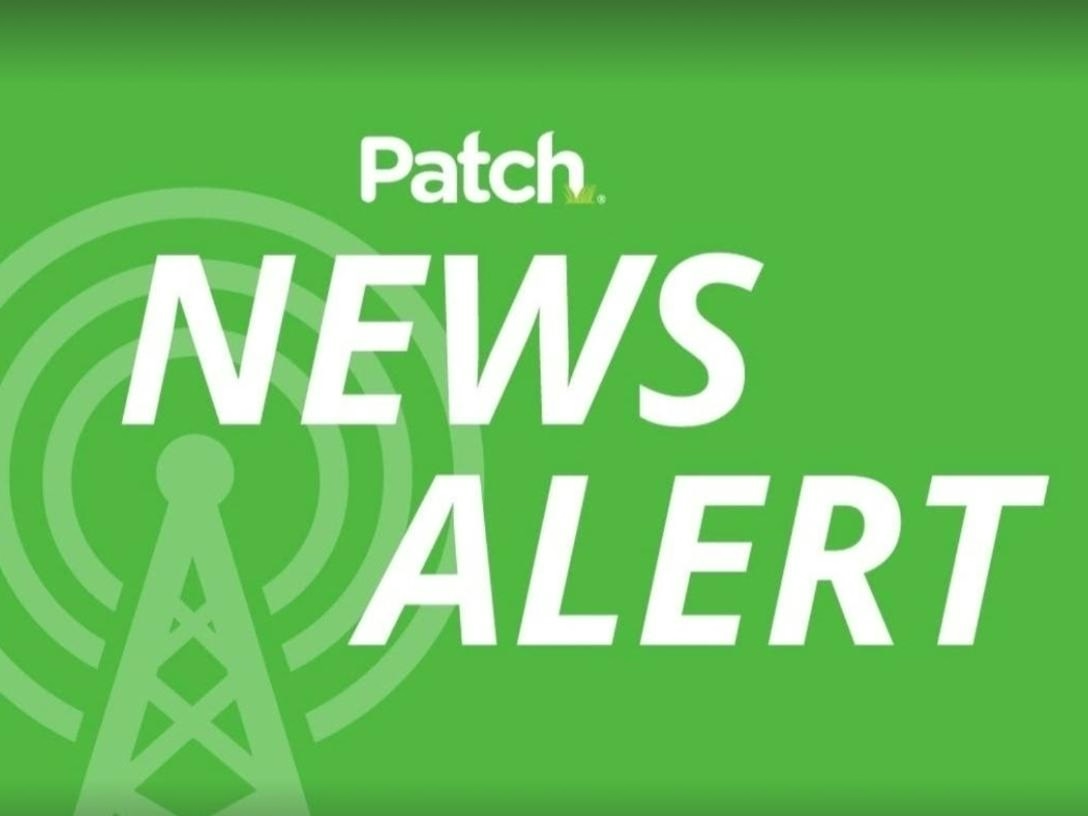
JetBlue Flight from MacArthur Airport Reports Possible Engine Issue, FAA Says
JetBlue Flight from MacArthur Airport Reports Possible Engine Issue, FAA Says
Incident Overview
A JetBlue flight departing from Long Island MacArthur Airport en route to Orlando reported a possible engine issue last week, according to the Federal Aviation Administration (FAA). JetBlue Flight 547, operated by an Airbus A320, safely diverted and landed at John F. Kennedy International Airport at approximately 2:45 p.m. local time on Wednesday, August 13. The flight crew alerted authorities to the potential engine problem during the journey, prompting an immediate response. While some initial reports suggested the issue arose during ascent and involved significant engine damage, the FAA has not confirmed these specifics and has announced an ongoing investigation into the matter.
Implications for JetBlue and the Aviation Industry
The incident poses significant challenges for JetBlue as the airline must address safety concerns and reassure its passengers following the event. The FAA’s investigation will likely increase regulatory scrutiny, potentially affecting the airline’s operational protocols, insurance considerations, and compliance requirements. Competitors within the aviation sector are expected to observe JetBlue’s handling of the situation closely, which may influence broader industry safety standards.
This event occurs amid heightened attention to engine reliability and safety protocols across the airline industry, following recent incidents involving carriers such as United Airlines and Condor Airlines. As investigations continue, both JetBlue and other airlines are anticipated to review and strengthen their safety measures to uphold public confidence and meet regulatory expectations.
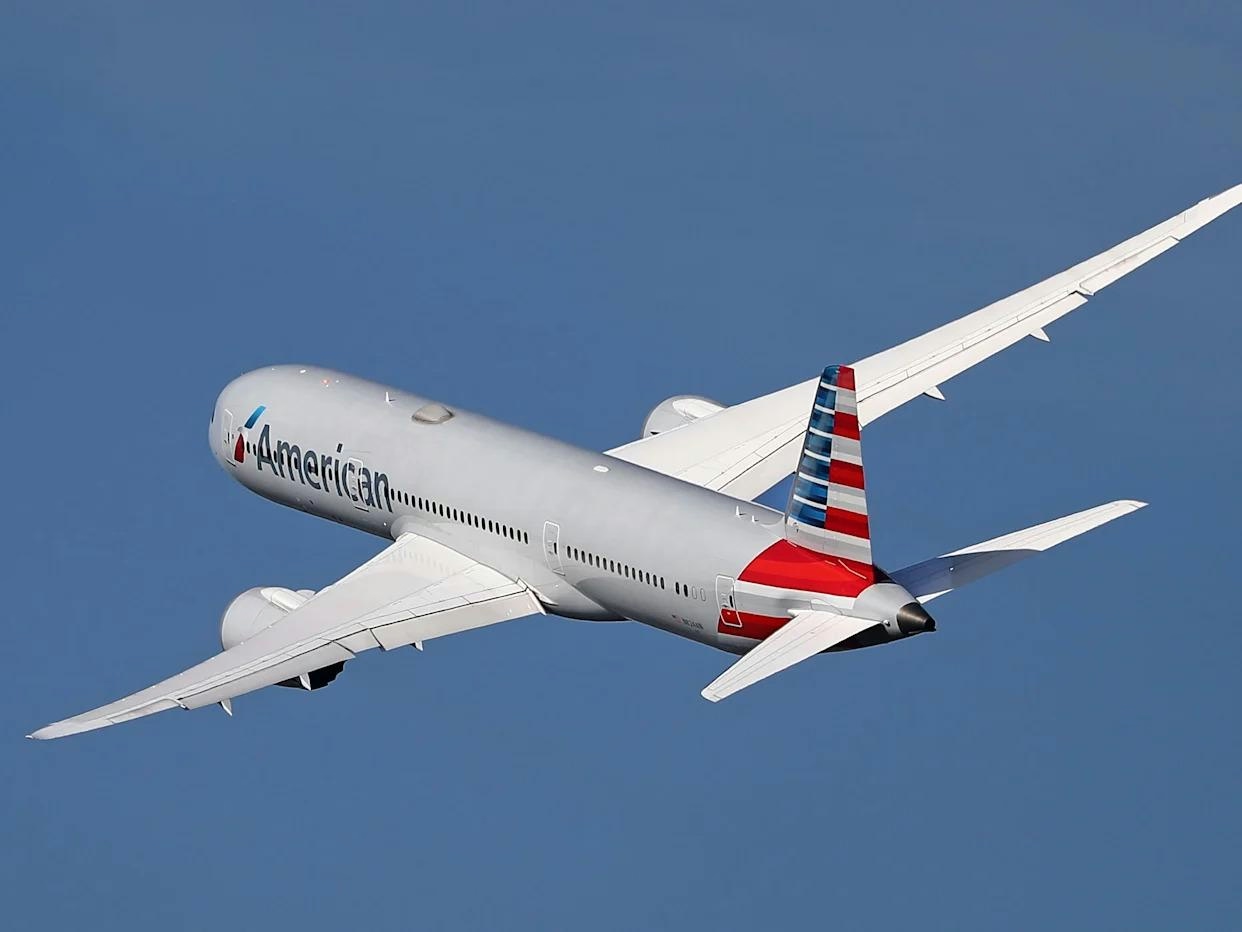
Investigation Underway After Dreamliner Diverts Over China
Investigation Underway After Dreamliner Diverts Over China
A LOT Polish Airlines Boeing 787-9 Dreamliner was compelled to divert to Urumqi, China, on Friday, August 15, following a reported engine issue during its flight from Tokyo Narita to Warsaw. The aircraft, registered SP-LSA and operating as flight LO-80, was cruising at an altitude of 11,000 meters over western China when the crew detected a technical problem with one of its Rolls-Royce Trent 1000 engines. In response, the pilots initiated a descent and diverted to Ürümqi Tianshan International Airport (URC), where the jet landed safely on runway 26R approximately an hour and a half later. Passengers were subsequently rebooked on alternative flights to continue their journeys.
The precise nature of the engine fault has not been disclosed, and LOT Polish Airlines has refrained from providing further details. The aircraft remains grounded in Urumqi as investigations proceed. This incident has reignited scrutiny of the Rolls-Royce Trent 1000 engines, which have a documented history of reliability challenges. Designed specifically for the Dreamliner program, the Trent 1000 engine has accumulated over 20 million flight hours but has been plagued by persistent technical issues. Notably, fatigue cracking in turbine blades led to extensive inspections and temporary groundings in 2016, while regulatory restrictions on ETOPS (Extended-range Twin-engine Operational Performance Standards) clearance for certain variants were imposed in 2018.
Broader Implications for Airlines and Manufacturers
These ongoing reliability concerns have disrupted airline operations globally. Major carriers including Virgin Atlantic, British Airways, Air New Zealand, All Nippon Airways, Gulf Air, and Norwegian Air have all faced operational challenges linked to the Trent 1000. Some have been forced to adjust schedules or temporarily ground portions of their Dreamliner fleets while awaiting repairs or modifications.
The latest incident presents renewed challenges for Boeing, which must address heightened safety concerns surrounding the Dreamliner. Regulatory authorities are expected to intensify scrutiny as they investigate the cause of the diversion. Maintaining customer confidence will be crucial for both Boeing and its airline partners, particularly as market reactions could be swift and adverse. Investor sentiment may be negatively affected if the event raises broader doubts about the 787’s safety, potentially impacting Boeing’s stock performance. Meanwhile, competitors may leverage the situation to emphasize the safety records of their own aircraft, and some airlines might consider precautionary groundings of Dreamliner fleets pending further findings.
Rolls-Royce continues efforts to enhance the Trent 1000’s durability, most recently introducing a Durability Enhancement package featuring redesigned turbine blades. Nevertheless, the recurrence of engine-related incidents highlights the ongoing operational and reputational risks faced by both the engine manufacturer and Boeing.
As the investigation unfolds, the aviation industry will be closely monitoring updates regarding the cause of the incident and any potential ramifications for the global Dreamliner fleet.
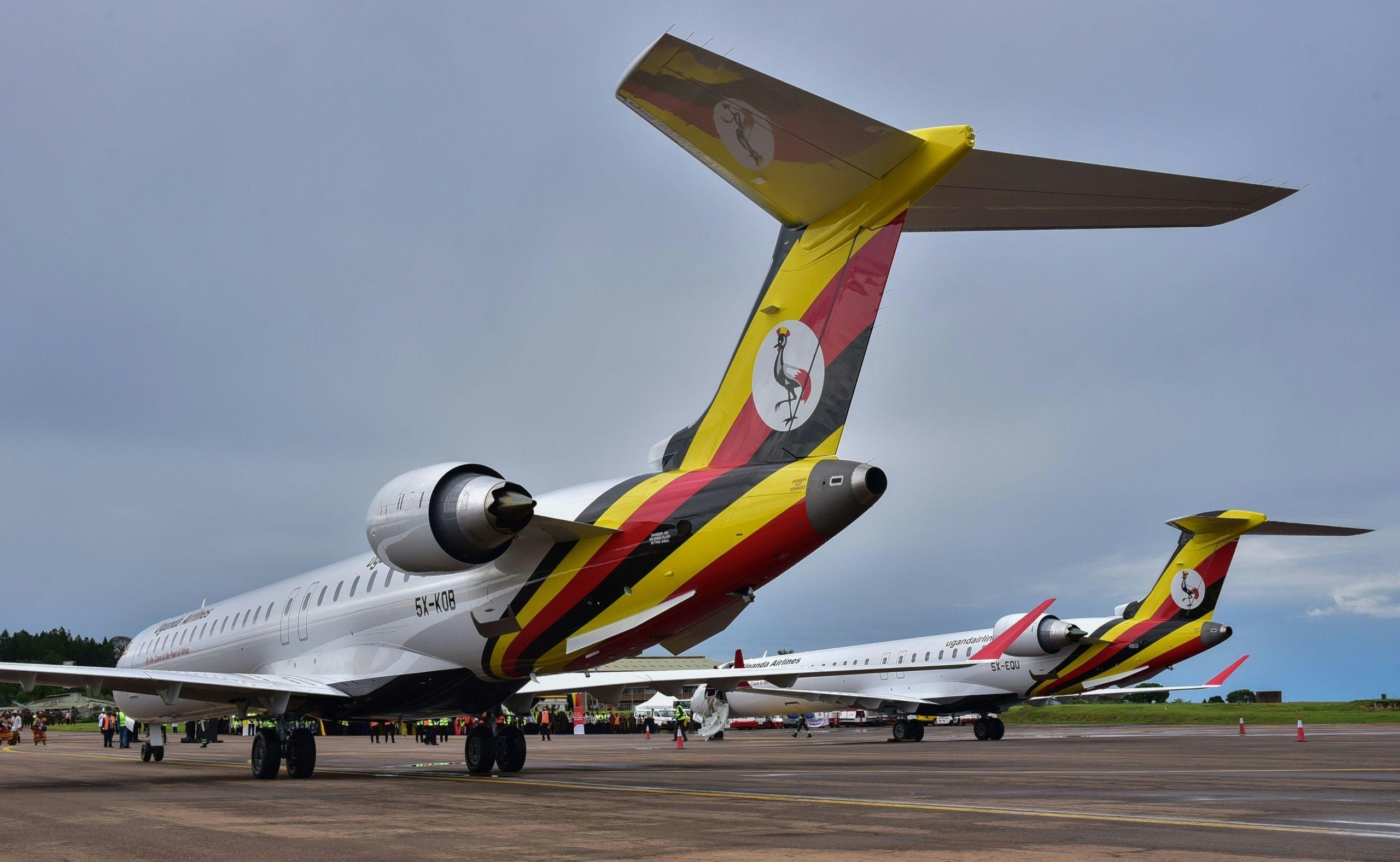
Uganda Airlines Faces Scrutiny Over Losses and CRJ900 Fleet
Uganda Airlines Faces Scrutiny Over Losses and CRJ900 Fleet
Uganda Airlines is confronting intense scrutiny following the Auditor General’s report, which revealed losses exceeding UGX237.85 billion (approximately USD66.8 million) for the 2023/24 financial year. The national carrier’s management appeared before Parliament’s Committee on Commissions, Statutory Authorities, and State Enterprises (COSASE) on August 14 to address concerns regarding persistent financial difficulties and the continued reliance on its ageing Bombardier CRJ900LR fleet.
Financial Challenges and Fleet Concerns
Chief Executive Officer Jenifer Bamuturaki attributed the airline’s losses to several factors, including high fuel prices, currency depreciation, increased crew allowances, and the costly maintenance and spare parts required for the four CRJ900LR regional jets. Lawmakers questioned the initial decision to acquire these aircraft, summoning former executives—among them ex-CEO Ephraim Bagenda and members of the procurement team—to justify the rationale behind the fleet choice. The committee emphasized its constitutional mandate to hold previous officials accountable for decisions that have adversely affected the airline’s performance.
The airline’s ongoing financial struggles have raised alarm among investors and market analysts, who warn that continued losses could undermine confidence and intensify pressure on management to enhance operational efficiency. Competitors may exploit Uganda Airlines’ vulnerabilities by offering more competitive services and pricing, potentially eroding the national carrier’s market share. Additionally, the heavy dependence on the CRJ900 fleet has attracted regulatory and operational scrutiny, with lawmakers advocating for strategic adjustments to secure the airline’s future viability.
Parliamentary Criticism and Management Response
Parliamentarians further criticized Uganda Airlines for failing to pay government dividends for two consecutive years, its heavy reliance on passenger and cargo revenue, and a rising number of lawsuits related to delayed cargo and lost baggage. In response, management highlighted that the airline’s debt remains below the critical 50% equity threshold and noted that the 2024 loss represented a 25.6% improvement compared to the previous year’s UGX324.94 billion (USD91.2 million) deficit. Bamuturaki stated that the airline is actively renegotiating contracts to reduce costs and eliminate unfavorable terms.
COSASE chairman Medard Lubega Sseggona described the losses as “a matter of grave concern” and instructed Bamuturaki to address allegations of ticket tampering and fare manipulation. Transport Minister Edward Katumba Wamala informed the committee that collusion between staff and affiliated travel agencies had resulted in estimated losses of UGX179 billion (USD50.2 million) from price manipulation and UGX140 billion (USD39.3 million) from fare tampering. The committee mandated that management submit a written response by August 18, including findings from a South African consultancy investigating the airline’s revenue challenges.
Future Plans and Fleet Expansion
Looking ahead, Bamuturaki announced plans to launch domestic flights in the 2026/27 financial year, aiming to enhance internal connectivity and alleviate pressure on Uganda’s road infrastructure. Currently serving 23 international destinations—including a recently inaugurated route to London Gatwick—Uganda Airlines intends to utilize the country’s 47 airstrips to support these domestic services. The airline operates four CRJ900LRs and two A330-800Ns and is finalizing an order with Airbus for two A320-200Ns and two A321-200Ns. In the interim, it plans to dry-lease one A320-200 and one A321-200 by October 2025 and has extended a 12-month ACMI contract for an A320-200 from Danish Air Transport (DAT). Additionally, the airline has received government approval to wet-lease a Boeing 737-800(F) while ongoing discussions with Boeing continue regarding a potential purchase.
As Uganda Airlines grapples with mounting financial and operational pressures, its management faces increasing demands to implement reforms and restore confidence in the national carrier’s future.
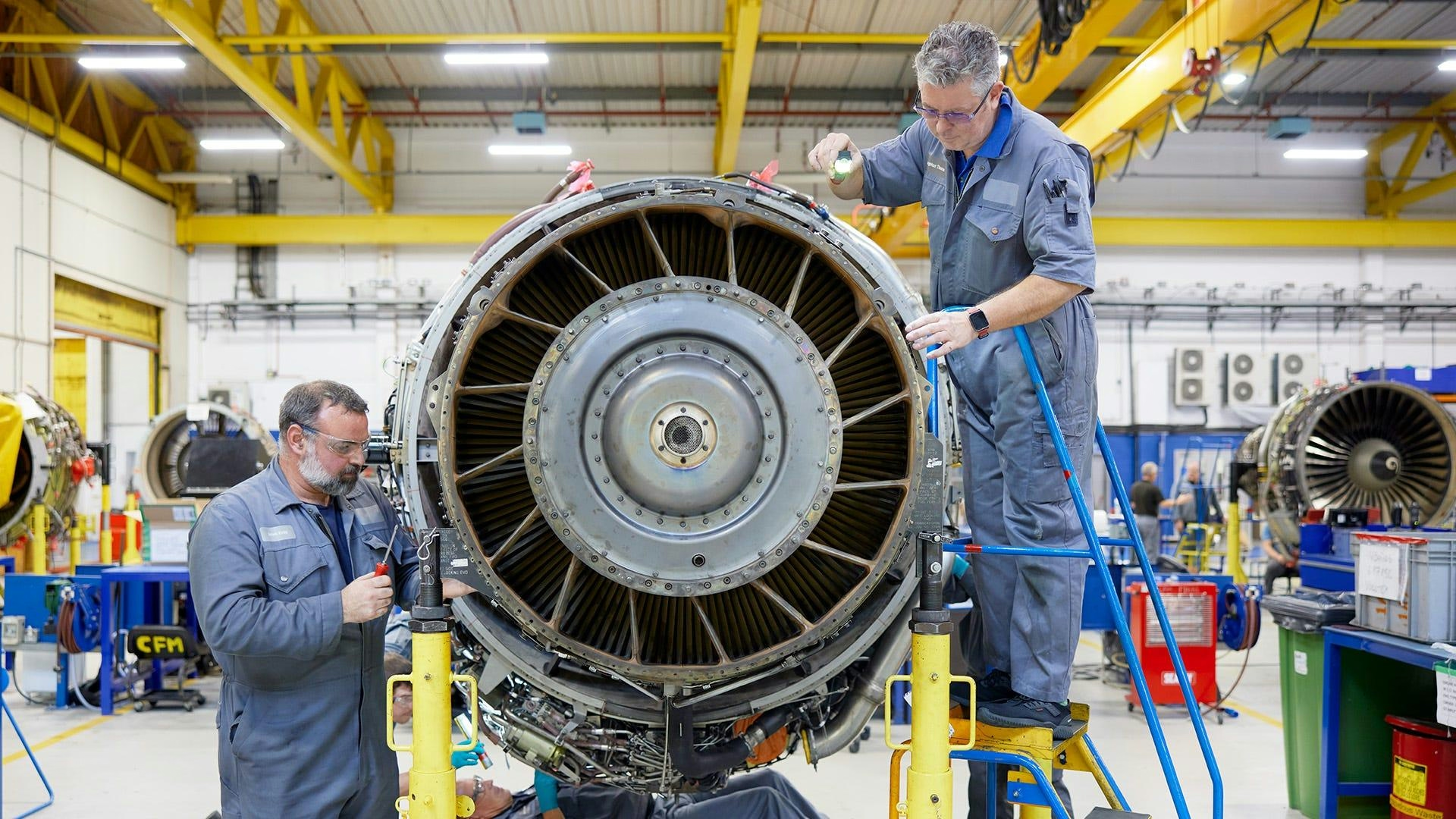
AirAsia Partners with GE Aerospace on Fuel Management Software
AirAsia Partners with GE Aerospace to Enhance Fuel Efficiency
AirAsia has announced a renewed collaboration with GE Aerospace, adopting the company’s Fuel Insight software to improve fuel efficiency across its entire fleet. This partnership represents a significant advancement in AirAsia’s ongoing efforts to optimize operational performance, reduce costs, and further its sustainability objectives.
Deployment of Advanced Fuel Management Technology
Fuel Insight, a component of GE Aerospace’s Software as a Service portfolio, will be implemented across all AirAsia Aviation Group’s Air Operator Certificates (AOCs) in Southeast Asia. The platform utilizes advanced analytics and real-time operational data, enabling AirAsia’s operations team to identify opportunities for enhanced fuel performance, more efficient route planning, and the reduction of unnecessary fuel consumption. These capabilities are anticipated to generate cost savings and improve operational reliability, while supporting the airline’s environmental commitments.
Captain Chester Voo, Deputy Group CEO (Airline Operations) of AirAsia Aviation Group, highlighted the strategic importance of the partnership, stating, “This relationship is a strategic step forward in strengthening how we manage fuel efficiency across the Group. GE Aerospace’s technology enables us to make smarter, data-informed decisions that support both our cost-efficiency and sustainability strategies, helping us operate more efficiently and in turn, offer more competitive fares for our guests.”
Andrew Coleman, General Manager of GE Aerospace’s Software as a Service division, added, “Fuel Insight is all about empowering airlines with the data and tools they need to safely operate more efficiently and more sustainably. AirAsia has been a trailblazer in this regard for over a decade and we are excited to see AirAsia’s ambition to build on this strength and lead our industry to new heights with our technology at the forefront of its sustainability initiatives.”
Challenges and Industry Context
While the partnership is expected to deliver substantial benefits, AirAsia may encounter challenges related to integrating Fuel Insight with its existing systems, managing the transition and associated training costs, and addressing any technical issues during implementation. Market response to the collaboration has been predominantly positive, with investors viewing the move as a forward-looking strategy. Nonetheless, some skepticism remains regarding the immediate impact on operational expenses. Competitors in the industry may respond by upgrading their own fuel management technologies or pursuing similar partnerships to maintain their competitive positioning.
In a related development within the aviation software sector, Vellox Group, a global leader in unified aviation operations software, has acquired ADSoftware (ADS), a French provider specializing in CAMO and maintenance software. This acquisition broadens Vellox’s platform into the maintenance domain, offering a comprehensive solution for operations and airworthiness management. ADS’s flagship ERP product, AIRPACK, will be rebranded under the Vellox name, with all ADS employees joining Vellox to ensure service continuity and accelerate innovation.
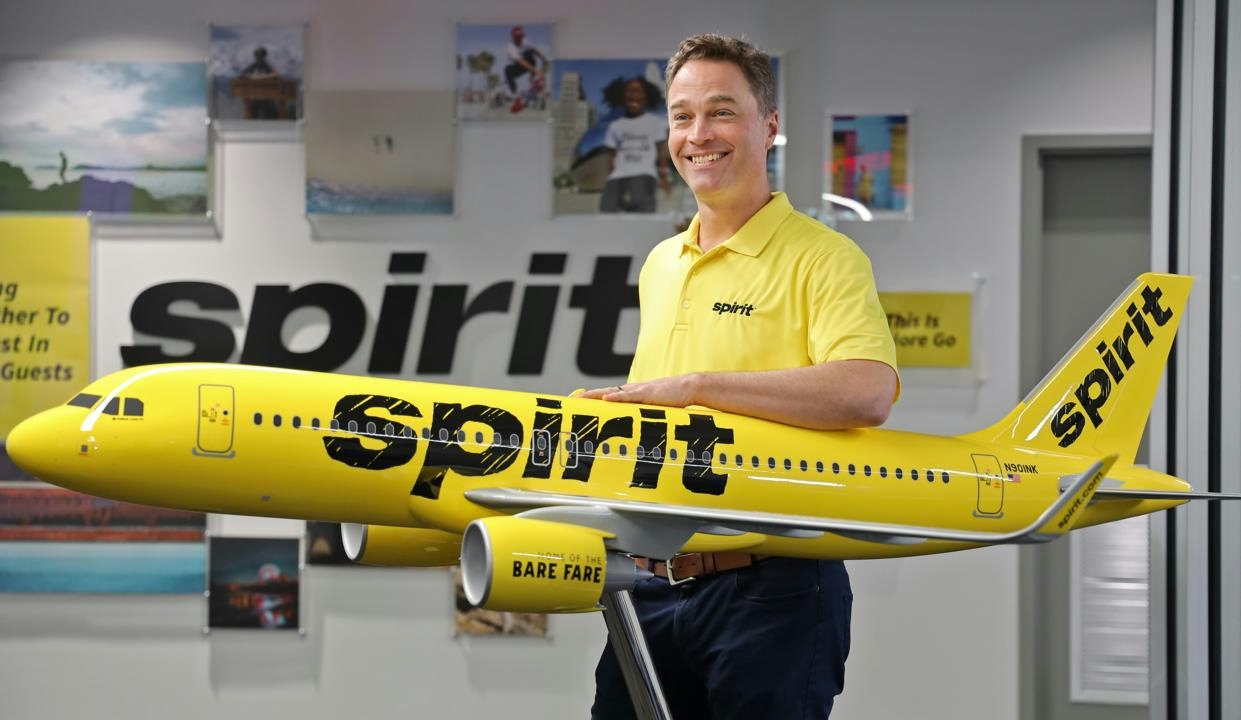
Spirit Airlines Vice President of Network Planning John Kirby Retires After 40 Years
Spirit Airlines Vice President of Network Planning John Kirby Retires After 40 Years
Spirit Airlines has announced the retirement of John Kirby, its Vice President of Network Planning, concluding a remarkable career in aviation that spanned over four decades. Kirby will step down at the end of this month, leaving behind a legacy marked by strategic leadership, innovation, and a significant influence on the airline industry.
A Career Defined by Strategic Vision
John Kirby’s extensive career in aviation is distinguished by his visionary leadership and dedication to operational excellence. Over 40 years, he held senior positions at seven major U.S. airlines, including Alaska Airlines, Southwest Airlines, AirTran Airways, and Spirit Airlines. His expertise in network planning, fleet management, and schedule optimization contributed to streamlining operations and enhancing the passenger experience across the sector.
Kirby was widely recognized for cultivating strong relationships with industry partners and stakeholders, earning a reputation as a forward-thinking leader. His strategic insights consistently positioned the airlines he served among the most competitive in the market.
Steering Spirit Airlines’ Expansion
Kirby joined Spirit Airlines in 2018 during a critical phase of growth for the carrier. Entrusted with leading network expansion, he played a central role in establishing Fort Lauderdale-Hollywood International Airport (FLL) as a key hub and bolstering Spirit’s presence both domestically and internationally. Under his leadership, Spirit expanded its fleet, increased its destination offerings, and improved operational efficiency, all while maintaining its commitment to affordable travel.
Rana Ghosh, Senior Vice President and Chief Commercial Officer at Spirit Airlines, acknowledged Kirby’s impact, stating, “John is an incredible partner who has played a pivotal role in shaping Spirit’s network and has dedicated more than four decades to the industry. As we celebrate John’s retirement, we are also in the process of selecting his successor to ensure a seamless transition.”
Challenges Ahead Amid Leadership Transition
Kirby’s retirement comes at a challenging time for Spirit Airlines, which is currently grappling with significant financial difficulties. The airline has seen a 40% decline in its share price alongside ongoing liquidity concerns, raising questions about its long-term viability. Industry analysts caution that the departure of Kirby’s strategic leadership may complicate Spirit’s efforts to sustain its competitive network strategy.
This leadership change could also trigger market responses, with competitors such as Frontier, JetBlue, and Southwest potentially adjusting fares, which may result in higher prices for consumers. As Spirit confronts its financial challenges, the airline’s future remains uncertain, with some observers speculating about possible restructuring or even the cessation of operations absent a substantial turnaround.
A Lasting Impact on Spirit Airlines
Beyond measurable growth, Kirby’s influence is reflected in Spirit’s collaborative culture and strategic partnerships. His legacy embodies innovation, resilience, and a steadfast commitment to making air travel accessible. As Spirit Airlines embarks on a new chapter, the company faces the dual task of honoring Kirby’s achievements while navigating a rapidly evolving and uncertain market environment.

Labor Disputes Challenge Aviation Industry’s Financial Stability
Labor Disputes Challenge Aviation Industry’s Financial Stability
The global aviation industry is confronting significant financial pressures as labor disputes and workforce shortages increasingly disrupt operations. From high-profile strikes at major airlines to escalating wage demands across airports and hospitality sectors, the industry faces mounting challenges in balancing labor costs, operational efficiency, and regulatory compliance.
Labor Unrest Reveals Deep Vulnerabilities
Recent labor conflicts have exposed systemic risks within the aviation sector. Air Canada’s ongoing dispute with the Canadian Union of Public Employees (CUPE) exemplifies this fragility. With 99.7% of CUPE members authorizing a strike over unpaid ground duties, Air Canada is incurring estimated daily losses of $98 million, while Canada’s tourism industry faces a potential $1.4 billion setback. The airline’s operations have also been disrupted by a flight attendant strike that continued despite a government-mandated back-to-work order, highlighting the increasing assertiveness of labor groups.
This unrest is not confined to Canada. In the United States, airlines are contending with inflation-driven wage demands, while a recent minimum wage increase for hospitality and airport workers in Los Angeles has led to hiring freezes, halted renovations, and the sale of some airport-area hotels. These developments raise concerns about the sustainability of critical airport infrastructure amid rising labor costs.
Broader Industry Implications and Supply Chain Challenges
The repercussions of labor disputes extend well beyond individual carriers. The International Air Transport Association (IATA) now projects fewer than 1,600 aircraft deliveries in 2025, as production delays at Boeing and Airbus—exacerbated by mechanics’ strikes—compound existing supply chain difficulties. Concurrently, aging aircraft fleets and escalating maintenance expenses are driving growth in the maintenance, repair, and overhaul (MRO) sector, which is expected to expand at a compound annual growth rate of 3.3% through 2032.
In India, the Directorate General of Civil Aviation (DGCA) is grappling with a shortage of technical personnel, complicating regulatory oversight and maintenance operations. These global trends underscore the risks airlines face if they fail to modernize fleets or adequately address labor grievances, potentially deepening operational disruptions and financial strain.
Strategic Responses and Investor Considerations
Some airlines have managed to navigate these challenges more effectively by proactively addressing labor concerns. Delta Air Lines and Alaska Airlines, for example, have adjusted wages and enhanced benefits to avoid major strikes, contributing to relative stock market resilience. Delta’s 2024 initiative to align flight attendant pay with inflation, at an estimated cost of $120 million, has supported a 7.5% year-to-date stock outperformance compared to the S&P 500.
Nevertheless, these measures have limitations. Alaska Air Group reported a decline in net income for the second quarter of 2025, attributing the downturn to higher labor costs and integration difficulties following its acquisition of Hawaiian Holdings. Meanwhile, low-cost carriers such as Spirit and Frontier face existential challenges amid high debt levels and ongoing labor negotiations in an increasingly costly operating environment.
Workforce Shortages and Operational Pressures
Beyond strikes, the aviation sector confronts a looming global pilot shortage, projected to reach 50,000 by 2025 and 130,000 over the next two decades. This shortage, coupled with understaffed air traffic control centers and cabin crew gaps, is driving up unit costs and undermining service quality. Ryanair’s €150 million revenue loss in 2025 due to baggage handler strikes illustrates the financial and reputational risks posed by even brief labor disruptions.
Airlines investing in training programs and automation, such as Southwest Airlines’ $200 million commitment to pilot academies, may secure a competitive advantage. However, as labor disputes and workforce shortages persist, the financial stability of the aviation industry remains uncertain, with investors closely monitoring which carriers can successfully adapt to this evolving landscape of labor-driven volatility.
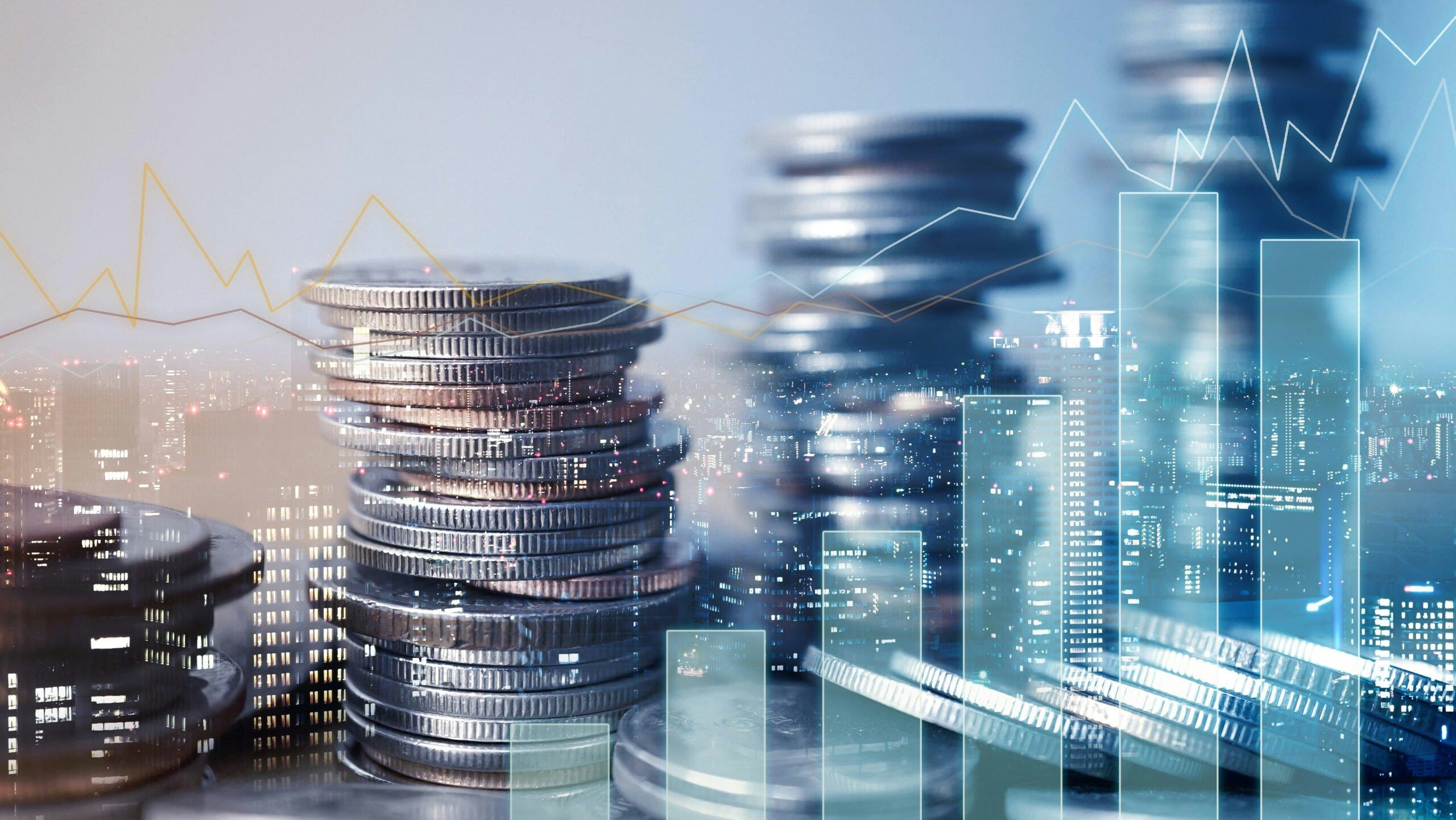
IFS acquires 7bridges to boost AI supply chain capabilities
IFS Acquires 7bridges to Strengthen AI Supply Chain Capabilities
IFS has announced the acquisition of 7bridges, an AI-driven supply chain management company, in a strategic move to enhance its leadership in Industrial AI, particularly in logistics and transport optimisation. This acquisition is expected to accelerate the development of next-generation, AI-enabled supply chain solutions while broadening IFS’s presence in asset- and service-intensive sectors such as manufacturing and aerospace and defence.
Enhancing Supply Chain Efficiency Through AI
7bridges offers advanced AI simulation and analytics technology designed to simplify complex supply chains. Its platform automates logistics networks by integrating rapid data capture, a comprehensive semantic data layer, and sophisticated AI models. This technology enables industrial clients to tackle intricate supply chain challenges, automate up to 90% of manual data entry, and reduce transport costs by approximately 8%. Additionally, the company’s simulation engine supports improved decision-making at both tactical and operational levels, providing a significant competitive advantage.
By incorporating 7bridges into the IFS Cloud ecosystem, IFS aims to strengthen its simulation and optimisation capabilities across multiple industries. The acquisition comes at a time of heightened demand for AI-driven supply chain solutions, as companies grapple with rising costs, global disruptions, and increasing sustainability mandates. Leading manufacturers, distributors, and transport providers already rely on 7bridges’ technology to capture logistics data from diverse sources and enhance operational efficiency.
Integration Challenges and Market Implications
Despite the clear benefits, integrating 7bridges’ AI technologies into IFS’s existing systems may present challenges. These include ensuring seamless technological integration, safeguarding data security, and managing potential resistance from employees accustomed to traditional supply chain processes. Nevertheless, the acquisition is expected to bolster investor confidence in IFS’s innovation strategy.
Industry analysts anticipate that competitors will likely respond by accelerating their own AI initiatives or forming strategic partnerships to strengthen their supply chain offerings, underscoring the rapidly evolving and competitive nature of the market. Recent industry reports highlight growing interest in AI within logistics, even as concerns about organisational readiness persist. Companies across the sector are actively pursuing AI solutions to enhance supply chain resilience and efficiency.
IFS’s Broader AI Strategy
The acquisition of 7bridges follows IFS’s recent AI-focused investments, including the purchase of TheLoops, an agentic AI innovator, and the launch of Nexus Black, its AI innovation accelerator. These initiatives reflect IFS’s commitment to driving growth, resilience, and sustainability through advanced technology.
Mark Moffat, CEO of IFS, emphasised the strategic significance of the deal, noting that 7bridges’ expertise in AI-powered optimisation aligns closely with the needs of IFS’s asset-intensive customer base. He welcomed the 7bridges team, highlighting their capabilities as a strong complement to IFS’s existing portfolio.
With this acquisition, IFS signals a clear intent to expand its AI leadership and deliver solutions that enhance efficiency and resilience across industries, positioning itself at the forefront of AI-driven supply chain transformation.
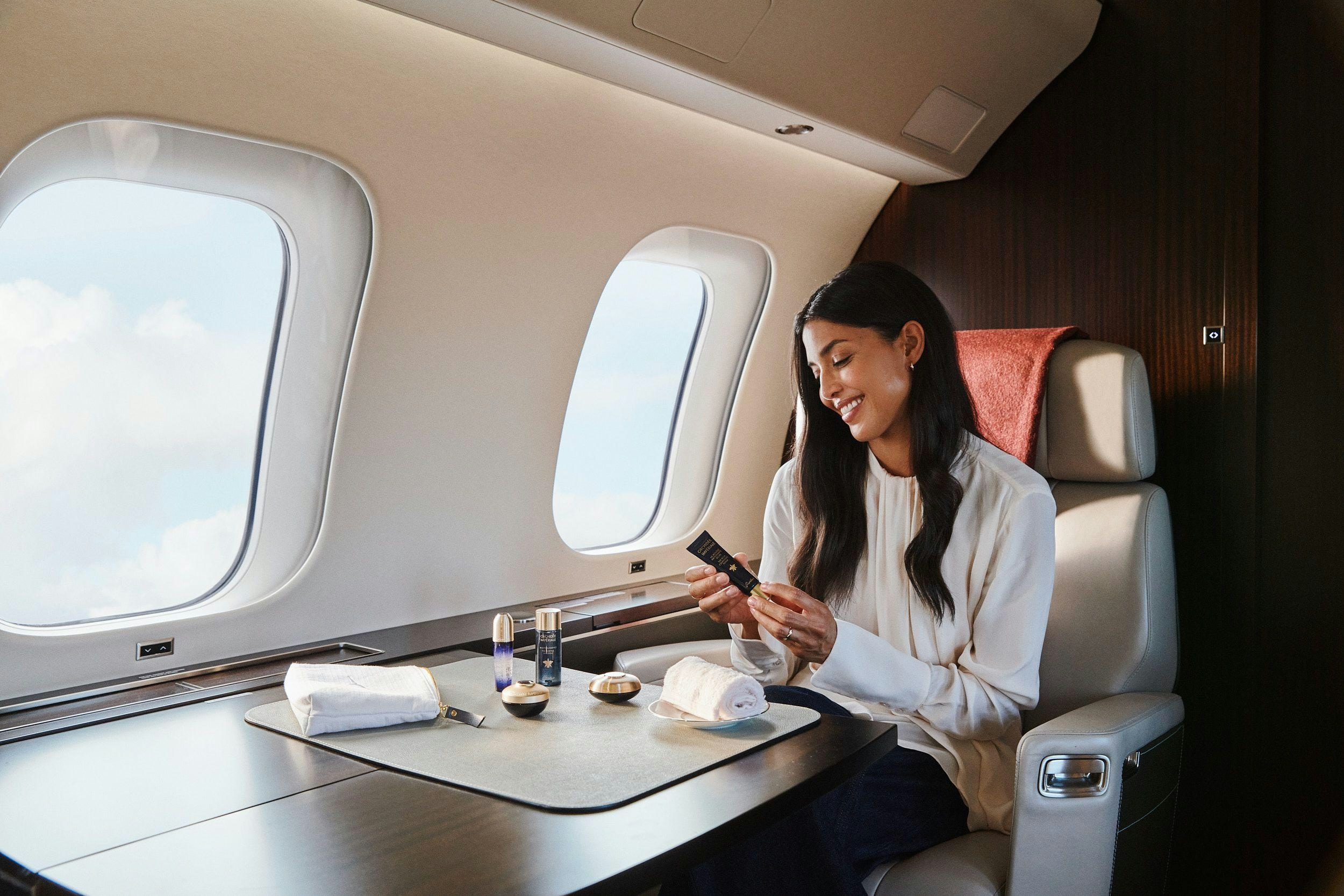
Sergey Petrossov’s Role in Vista Global’s Digital Transformation of Private Aviation
Sergey Petrossov’s Role in Vista Global’s Digital Transformation of Private Aviation
The 2019 acquisition of JetSmarter by Vista Global Holdings, the parent company of VistaJet and XO, marked a significant turning point in the evolution of private aviation. For the Dubai-based conglomerate, the transaction extended beyond expanding fleet size or market share; it was a strategic initiative aimed at acquiring advanced digital capabilities that traditional operators had struggled to develop independently. At the heart of this transformation was Sergey Petrossov, founder of JetSmarter, who assumed a pivotal leadership role as President of the combined XO business and Chief Growth & Digital Officer for Vista Global.
Vista Global’s acquisition strategy embodied a fundamental shift in industry perspective, recognizing that future competitive advantages in private aviation would be driven primarily by technology platforms rather than aircraft ownership or operational scale alone. JetSmarter’s innovations in mobile booking, real-time inventory management, and customer analytics provided a digital infrastructure that would have required years and substantial investment for Vista to build from scratch. As younger, tech-savvy clientele entered the market with expectations shaped by the digital standards of commercial aviation, Vista acknowledged the urgency of embracing this digital transformation.
Petrossov’s appointment underscored Vista’s commitment to systematic innovation across its entire portfolio—including VistaJet, XO, and other subsidiaries—rather than pursuing isolated platform upgrades. His technology-first approach sought to modernize legacy operations while preserving established customer relationships, positioning Vista to meet the evolving demands of the private aviation market.
Strategic Integration of Digital Platforms
Vista Global’s integration strategy involved merging JetSmarter’s digital platform with XOJET’s operational infrastructure to create XO, a hybrid entity that combined fundamentally different business models. JetSmarter had focused on digital-first products such as real-time charter booking, AI-driven dynamic pricing, and shared flights, whereas XOJET specialized in high-utilization, dedicated aircraft through traditional charter services. Under Petrossov’s leadership, this merger resulted in a vertically integrated platform that combined technology, consumer distribution, operational infrastructure, and dedicated aircraft assets—an unprecedented model within private aviation.
The XO platform unified critical functions including aircraft scheduling, crew management, maintenance tracking, revenue management, and customer booking into a single, cohesive technology infrastructure. This consolidation eliminated inefficiencies and provided customers with comprehensive visibility across Vista’s brands. Petrossov’s team successfully preserved JetSmarter’s user-friendly digital experience while integrating the operational rigor demanded by corporate travel managers.
The integration process, however, was not without its challenges. Combining platforms with differing technical architectures required significant engineering resources and meticulous change management. Petrossov oversaw this complex transition, ensuring uninterrupted service for existing members and maintaining business continuity throughout. The outcome was a hybrid service that married digital convenience with robust fleet management, delivering enterprise-level functionality tailored to Vista’s diverse clientele.
Navigating Industry Challenges and Market Dynamics
Transitioning from startup founder to corporate innovation leader, Petrossov adapted his entrepreneurial mindset to fit Vista’s established multinational structure. Unlike JetSmarter’s rapid iteration cycles, Vista’s operations involved managing complex stakeholder relationships across multiple brands, international markets, and regulatory environments.
As Vista advanced its digital transformation, it confronted broader industry challenges including regulatory constraints, intensifying competition, and the inherent complexities of technological integration. These dynamics have influenced shifting customer preferences, with an increasing demand for seamless digital solutions. Competitors have responded by accelerating their own innovation efforts and forging strategic partnerships to enhance their digital offerings.
Vista Global’s portfolio approach has enabled the company to pilot and scale digital innovations across its brands, reinforcing its position as a leader in the digital transformation of private aviation. Industry observers continue to monitor Vista’s official communications and sector reports for the latest developments and detailed insights.
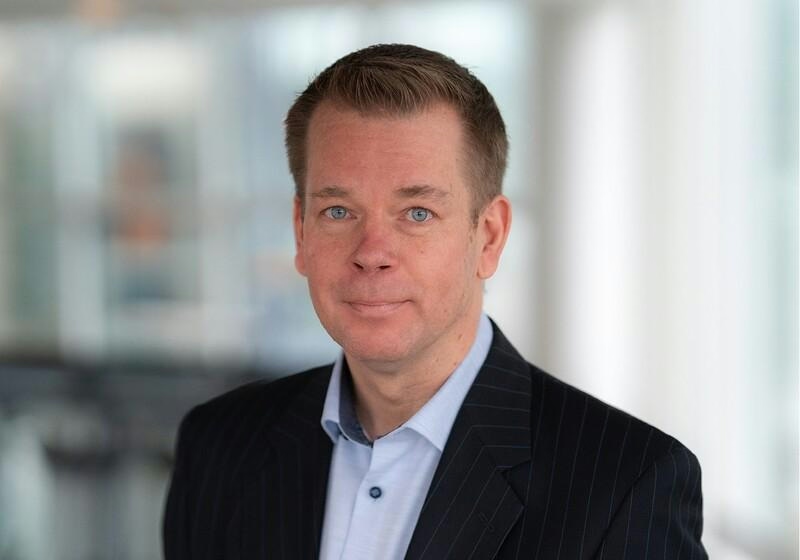
airBaltic Appoints Erno Hildén as CEO
airBaltic Names Erno Hildén as New CEO to Drive Strategic Growth
Latvian carrier airBaltic has announced the appointment of Erno Hildén as its Chief Executive Officer, effective December 1, 2025. The decision, ratified by the airline’s Supervisory Board, signals a deliberate effort to reinforce airBaltic’s growth trajectory and enhance its international footprint amid a rapidly changing aviation environment.
Extensive Leadership Experience in Aviation
Hildén, a Finnish national, brings more than 25 years of leadership experience in the global aviation and financial sectors. Prior to joining airBaltic, he held senior executive roles at prominent airlines, most notably serving as Executive Vice President and Group Chief Financial Officer at SAS Scandinavian Airlines until June 2025. During his tenure at SAS, Hildén was instrumental in capital raising initiatives and organizational restructuring, contributing to the airline’s sustainable growth in a highly competitive European market. His career also includes key leadership positions at Saudi Arabian Airlines Group and Finnair Plc, where he managed critical operational and financial responsibilities as Group CFO, Chief Operating Officer, and Executive Board member.
Navigating Post-Pandemic Recovery and Future Expansion
Hildén’s appointment comes at a critical juncture for airBaltic, which is emerging from the financial strains of the pandemic. Although the airline has reduced its net losses, uncertainties in travel demand persist. Industry analysts expect Hildén to capitalize on improving passenger traffic trends and to implement operational efficiencies that will position airBaltic for long-term success. His ability to respond to competitive pressures, as rival carriers intensify expansion efforts or adopt similar growth strategies, will be closely watched.
Until Hildén assumes leadership, Interim CEO Pauls Cālītis will maintain operational stability. Following the transition, Cālītis will resume his role as Chief Operating Officer and remain on the Executive Board, ensuring continuity and preserving institutional knowledge.
Strategic Focus on Network Optimization and Passenger Experience
airBaltic currently operates over 130 routes from its hubs in Riga, Tallinn, Vilnius, and Tampere, connecting Europe with destinations across the Middle East, North Africa, and the Caucasus. The airline’s extensive network serves as a crucial link for regional and international travelers. Under Hildén’s leadership, airBaltic is expected to prioritize optimizing its route structure, expanding services to high-demand destinations, and enhancing the overall passenger experience.
As the airline embarks on this new chapter, Hildén’s proven expertise in guiding airlines through transformation and growth is anticipated to steer airBaltic through ongoing industry challenges and support its ambitions for continued expansion and innovation.
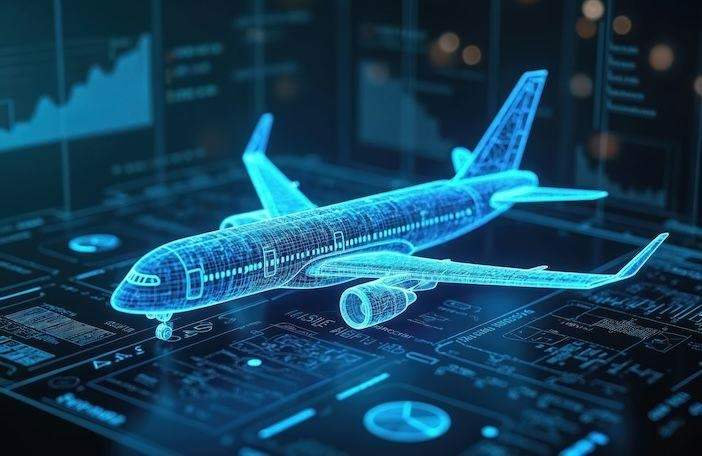
The Impact of AI on Aviation Learning and Development
The Impact of AI on Aviation Learning and Development
Balancing Technological Advancement with Human Expertise
A recent McKinsey report has highlighted the transformative potential of artificial intelligence (AI) and automation within the aviation industry. These technologies promise substantial improvements in productivity and operational efficiency. However, experts caution that without intentional integration into learning and development (L&D) frameworks and core business processes, the sector faces the risk of significant deskilling. The rapid adoption of AI could undermine critical human capabilities such as judgment, communication, and critical thinking—skills essential for frontline aviation personnel tasked with managing disruptions, ensuring passenger safety, and delivering high-quality customer service.
The McKinsey State of Aviation 2025 report emphasizes that organizational health, beyond mere efficiency, is a crucial determinant of sustained performance. Airlines that demonstrate strategic clarity, foster cross-functional collaboration, and maintain high levels of employee motivation are more likely to realize positive returns on invested capital. Yet, this organizational health is jeopardized if AI deployment proceeds without a clear strategy focused on human development and skill retention.
Risks of Overreliance on AI and Lessons from Other Industries
Emerging research reinforces these concerns. A study published in Humanities & Social Sciences Communications revealed that nearly 69% of participants experienced increased dependence on AI tools, which corresponded with reduced motivation to engage in learning and diminished involvement in complex tasks. This trend threatens to erode core competencies such as decision-making and independent problem-solving over time.
The aviation sector is not unique in confronting these challenges. Industries such as telecommunications and utilities have witnessed automation enhance efficiency but often at the expense of human expertise. When automated systems malfunction, employees may lack the necessary skills to intervene effectively. In aviation, the consequences are particularly severe: no AI-driven chatbot can soothe anxious passengers after cancellations, nor can algorithms replicate the empathy required to assist stranded families. While AI-powered predictive maintenance can mitigate many technical issues, it cannot account for every variable during operational disruptions. Human intelligence and adaptability remain indispensable.
Navigating AI Integration Amid Market Pressures
The broader market is currently experiencing a surge in AI investment, driven by intense competition for talent and advanced semiconductor technologies. This rapid expansion carries risks reminiscent of previous technology booms that resulted in market volatility and disruption. In response, some competitors are pursuing strategic collaborations aimed at developing sustainable operational models and integrating AI tools that personalize learning and support workforce development. Despite these efforts, actual adoption of such tools remains limited, and human resources departments continue to grapple with how best to invest in future talent and skills amid ongoing AI advancements.
Across sectors including retail, hospitality, and banking, AI is increasingly viewed as a means to empower rather than replace human service. For instance, NatWest’s collaboration with OpenAI to enhance its ‘Cora’ digital assistant has improved customer satisfaction while reducing dependence on human advisors. In aviation, reimagining the travel experience through AI will require a renewed emphasis on building employee confidence and capability, ensuring that technology complements rather than diminishes the human touch that defines exceptional service.
As the aviation industry undergoes this technological transformation, the central challenge will be to harness AI’s potential while preserving the skills and judgment that remain fundamental to its success.
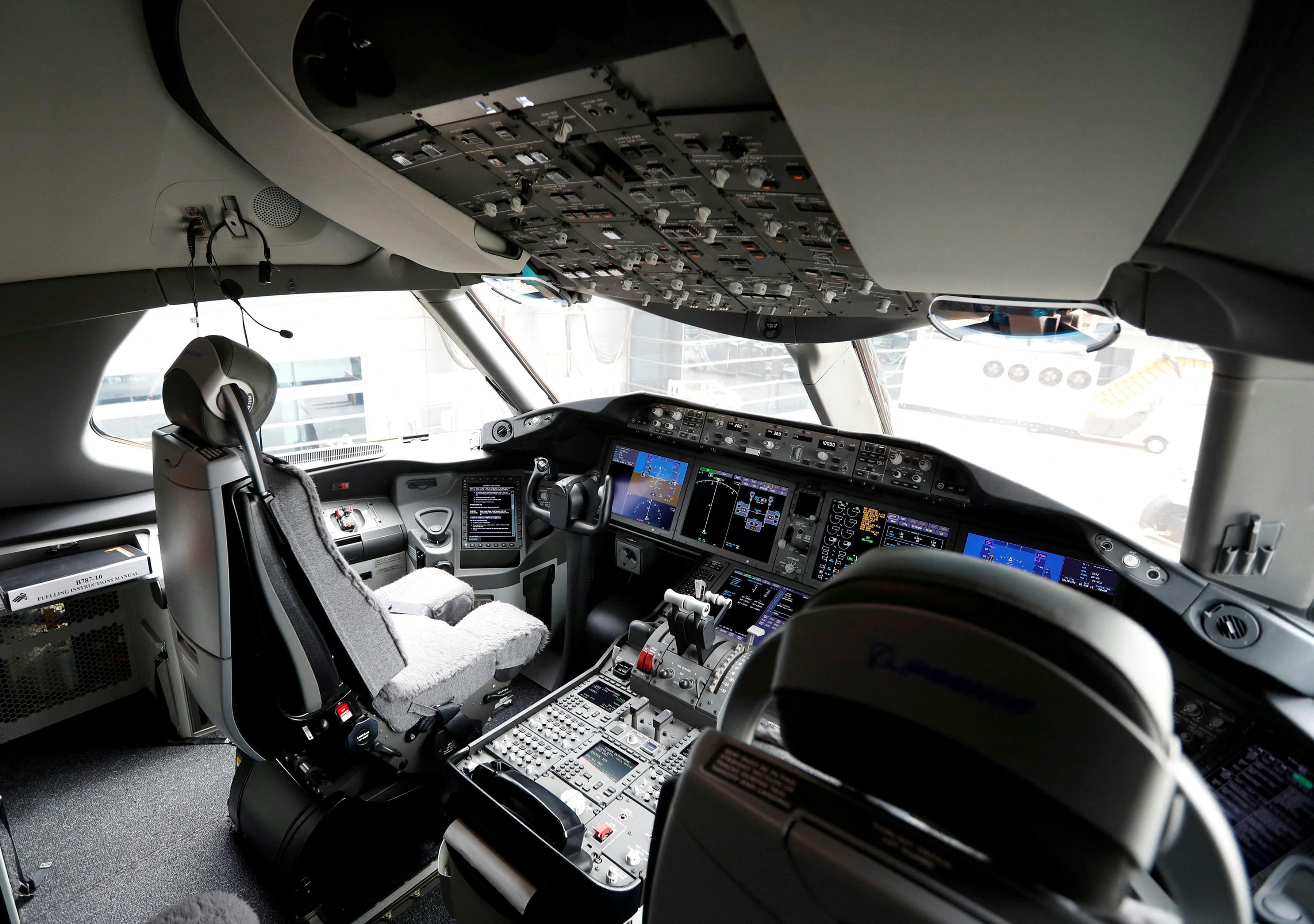
US Expert: Boeing 787 Experienced Fuel Switch Cut-Off in 2019; Japanese Pilots Did Not Intervene
US Expert Highlights Fuel Switch Cut-Off in 2019 Boeing 787 Incident; Japanese Pilots Did Not Intervene
A preliminary investigation into the Air India AI 171 crash in Ahmedabad has renewed focus on the Boeing 787’s fuel switch system. India’s Aircraft Accident Investigation Bureau (AAIB) reported that the fuel switch had shifted from the “Run” to the “Cutoff” position prior to the crash. The 15-page report, released this week, included a paraphrased exchange between Captain Sumeet Sabharwal and First Officer Clive Kunder, in which one pilot questioned the other about cutting off the fuel supply. Both pilots denied any deliberate action to do so. Shortly thereafter, a Mayday call was issued, and the aircraft crashed into a hostel for medical students, resulting in the deaths of all on board.
The AAIB report does not clarify how or why the fuel switch moved to the “Cutoff” position, leaving open the possibility of either pilot error or mechanical malfunction. To provide further insight, FinancialExpress.com consulted Mary Schiavo, a US aviation expert, who dismissed theories of intentional pilot intervention. Schiavo emphasized the absence of evidence supporting deliberate action and called for the full release of cockpit voice recorder (CVR) transcripts to avoid misinterpretation. She stated, “There is nothing here to suggest pilot suicide or murder.”
Parallels with 2019 ANA Boeing 787 Incident
Schiavo also referenced a similar event in 2019 involving an All Nippon Airways (ANA) Boeing 787. During final approach from Tokyo to Osaka, both engines failed after the aircraft’s software erroneously detected that it was on the ground. This triggered the Thrust Control Malfunction Accommodation System, which cut fuel to the engines. According to Schiavo, the pilots did not engage the fuel cutoff switches. The malfunction was ultimately traced to a software glitch rather than human error. The ANA flight, carrying 109 passengers and 9 crew members, landed safely without injuries.
Regulatory Response and Ongoing Investigations
The Air India crash has intensified scrutiny of Boeing’s fuel switch mechanisms. India’s civil aviation authority has ordered inspections of cockpit fuel switches on Boeing aircraft following the AAIB’s findings. Meanwhile, the US Federal Aviation Administration (FAA) and Boeing have maintained that the fuel switch locks are safe. However, investigations continue to explore whether the Ahmedabad crash resulted from pilot action or a technical fault.
Regulatory bodies worldwide are responding to these concerns. The UK Civil Aviation Authority (CAA) issued a warning just weeks before the crash, highlighting potential issues with fuel shutoff valves on several Boeing models, including the 737, 757, 767, 777, and 787. The fuel control switches, housed within the Throttle Control Module (TCM), had been replaced on the ill-fated AI 171 aircraft in both 2019 and 2023. Despite these replacements, questions remain regarding the reliability of the locking mechanism.
The heightened regulatory scrutiny and ongoing investigations have placed significant pressure on Boeing, with potential repercussions for its market position and investor confidence. As authorities continue to determine the root cause of the AI 171 crash, the aviation industry is preparing for possible safety reviews and further regulatory measures.
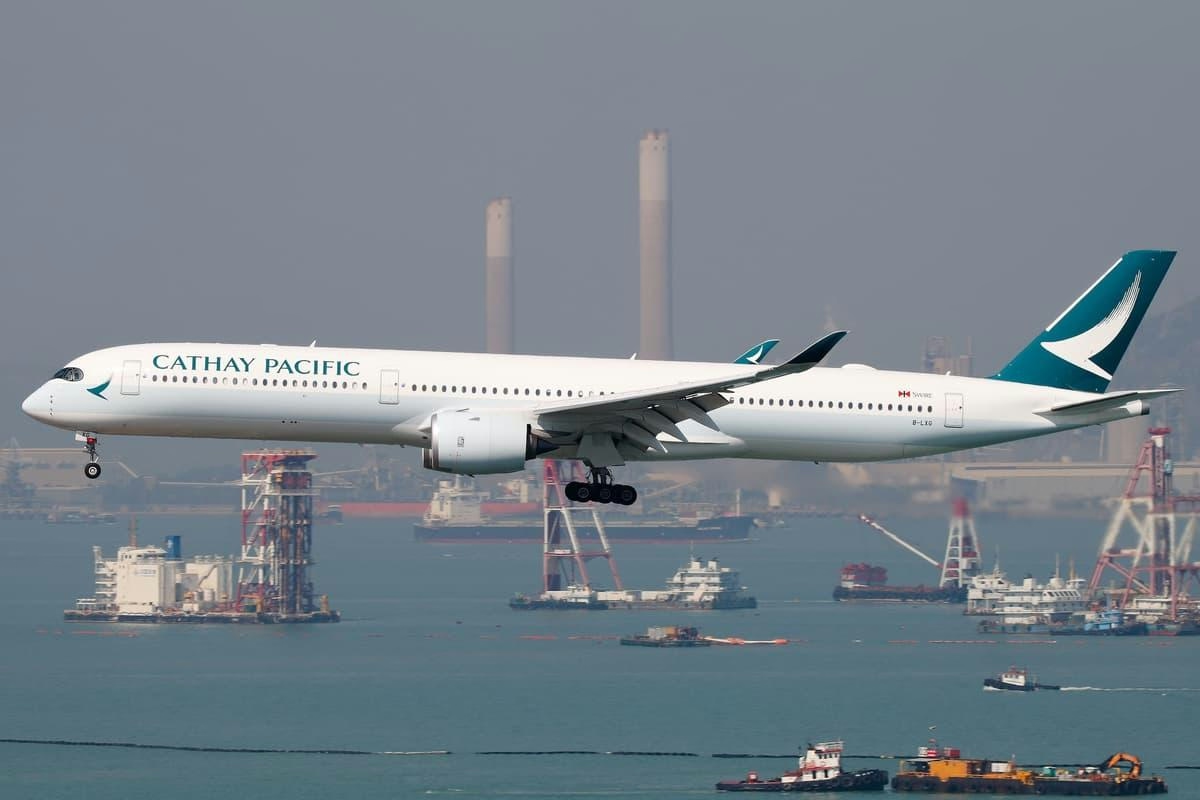
How the Airbus A350 Compares to the A340 in Size
How the Airbus A350 Compares to the A340 in Size
The question of whether the Airbus A350 is bigger than the Airbus A340 cannot be answered simply by looking at one dimension. In aviation, size encompasses multiple factors including fuselage length, wingspan, cabin width, passenger capacity, and operational efficiency. A comparison between these two widebody aircraft families highlights the evolution of aircraft design over the past three decades.
Introduced in the early 1990s, the A340 was Airbus’s response to the demand for ultra-long-haul flights, featuring four engines and a strong emphasis on range. In contrast, the A350, launched in the mid-2010s, embodies a new generation of aircraft characterized by twin engines, extensive use of composite materials, and a focus on fuel efficiency, reduced emissions, and enhanced passenger comfort.
Comparing the Largest Variants
Examining the largest variants—the A340-600 and the A350-1000—reveals that the A340-600 is marginally longer, measuring 247 feet 5 inches (75.3 meters) compared to the A350-1000’s 242 feet 3 inches (73.78 meters). Similarly, the A340-500, at 223 feet (67.9 meters), slightly surpasses the A350-900’s length of 219 feet 3 inches (66.8 meters). However, length alone does not provide a comprehensive picture.
The A350-1000 boasts a wider cabin, measuring 19 feet 5 inches (5.96 meters) against the A340-600’s 17 feet 3 inches (5.28 meters). This increased cabin width allows for greater seating potential and improved passenger comfort. In typical three-class configurations, the A340-600 accommodates approximately 380 passengers, while the A350-1000 can seat between 350 and 410, depending on airline specifications. This demonstrates that the A350-1000 can match or even exceed the A340-600’s capacity within a slightly smaller physical footprint, a testament to advancements in design and materials.
Efficiency and Market Impact
Beyond physical dimensions, the A350’s incorporation of advanced composite materials and modern aerodynamic features results in significant fuel efficiency improvements. Although these technological innovations contribute to higher production costs, airlines have responded favorably, appreciating the aircraft’s lower operating expenses and enhanced passenger experience. The A350’s efficiency has also influenced market trends; for instance, Air France-KLM recently shifted orders from the larger A350-1000 to the more versatile A350-900, reflecting a preference for operational flexibility and cost-effectiveness.
Competition in the long-haul market has intensified, particularly with Boeing’s 787 Dreamliner, which similarly employs advanced materials and fuel-saving technologies. This rivalry has driven manufacturers to prioritize efficiency and passenger comfort over mere size.
Defining “Bigger” in Aviation
Ultimately, the concept of “bigger” in aviation is multifaceted. While the A340-600 is longer, the A350-1000 offers a wider cabin, potentially higher seating capacity, and superior range and efficiency. The A350 family as a whole represents a shift toward smarter, more sustainable aircraft design that aligns with the evolving priorities of airlines and passengers.
There is no definitive winner in terms of size; the A340 may be longer, but the A350 is operationally larger in several key respects, reflecting the contemporary demands of the aviation industry.
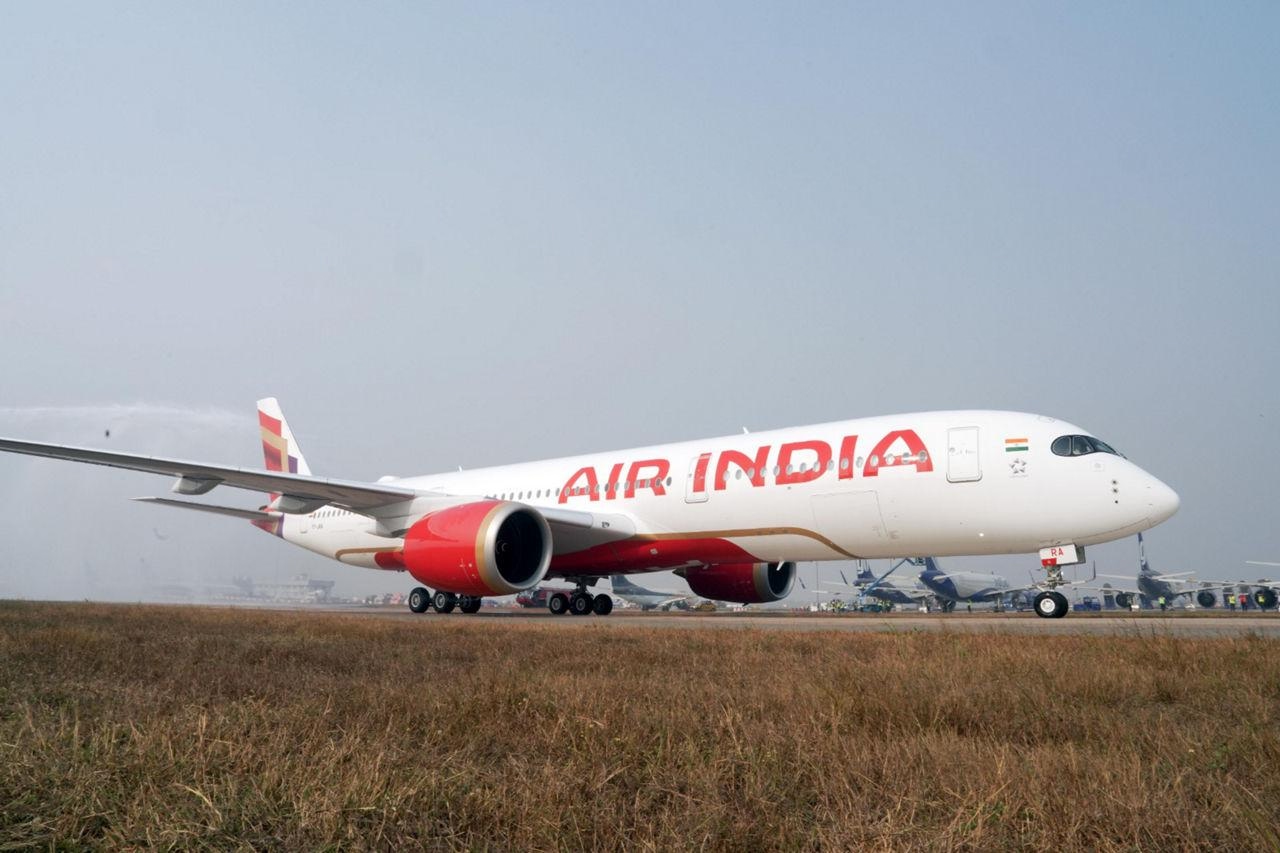
Air India Announces Delivery Schedule for A321neo, A350-1000, and 787-9 Aircraft
Air India Announces Delivery Schedule for A321neo, A350-1000, and 787-9 Aircraft
Major Fleet Modernization Underway
Air India Group, now under the ownership of the Tata Group, is advancing a landmark fleet renewal initiative that promises to transform its operational capabilities and competitive positioning within the Indian aviation sector. Central to this effort is an unprecedented order of 570 aircraft, among the largest in the history of commercial aviation. This extensive acquisition includes the latest models from Airbus and Boeing, notably the A321neo, A350-1000, 787-9 Dreamliner, and 777-9. These additions are expected to significantly expand Air India’s capacity and modernize its fleet.
Delivery Timeline and Deployment Plans
To date, the Air India Group—which comprises both Air India (AI) and Air India Express (IX)—has taken delivery of six Airbus A350-900s alongside more than 40 Boeing 737 MAX aircraft. The next phase of this fleet expansion is scheduled to commence in mid-2025, with the introduction of the first A321neo, A350-1000, and 787-9 Dreamliner aircraft. This phase represents a critical step in the airline’s strategy to increase capacity and enhance service offerings.
Air India Express will be the initial operator of the new A321neo, launching scheduled services from April 15, 2025. The inaugural routes will connect Delhi (DEL) with Bengaluru (BLR) and Srinagar (SXR), with subsequent expansions on April 20 to include Ayodhya (AYJ) and Jaipur (JAI). The A321neo will be configured with 180 economy seats and 12 business class seats, providing improved passenger options on key domestic routes. Currently, Air India operates two A321neos (registrations VT-RTC and VT-RTD) in a 192-seat dual-class layout.
Supply Chain Challenges and Operational Adjustments
Despite the progress, Air India continues to grapple with significant supply chain disruptions. CEO Campbell Wilson has acknowledged ongoing difficulties in procuring essential components such as engines, fuselages, and premium cabin seats. These challenges are expected to cause delivery delays from both Airbus and Boeing, potentially affecting the airline’s growth trajectory for the next four to five years. In response, Air India is extending the operational lifespan of older aircraft, which entails increased maintenance costs, and is facing obstacles in leasing additional planes due to global shortages. The airline is also exercising prudence regarding further Boeing orders amid manufacturing and regulatory constraints.
Widebody Fleet Expansion: A350-1000 and 787-9
The first A350-1000 destined for Air India is nearing completion at Airbus’s Toulouse facility and is anticipated to be delivered in 2026. Currently registered as F-WZFI, the aircraft will soon be re-registered under the VT-series for Indian operations. Concurrently, the initial Boeing 787-9 Dreamliners from the 2023 order are expected to arrive by the end of 2025. Three 787-9s are presently in production at Boeing’s Charleston, South Carolina plant, equipped with General Electric GEnx-1B engines.
Order Composition and Market Implications
Air India’s comprehensive 570-aircraft order includes 20 A350-900s, 20 A350-1000s, 140 A320neos, and 70 A321neos from Airbus, alongside 20 787-9 Dreamliners, 10 777X, and 190 737-8 MAX aircraft from Boeing. Additionally, a 2024 order comprises 10 more A350s and 90 A320 Family aircraft. This sweeping modernization is anticipated to provoke strategic responses from rival carriers, who may reassess their fleet plans in light of Air India’s expanded capacity. Industry analysts expect this development to intensify competition and elevate passenger service standards across the Indian aviation market.
Commitment to Sustainability and Efficiency
Air India’s investment in next-generation aircraft reflects a strong commitment to operational efficiency, passenger comfort, and environmental stewardship. The new A350 and 787-9 models offer substantial fuel savings and reduced emissions, aligning with global efforts to promote sustainable aviation. As these aircraft enter service from mid-2025 onward, Air India is positioned to lead the industry’s transition toward eco-friendly, high-capacity air travel.
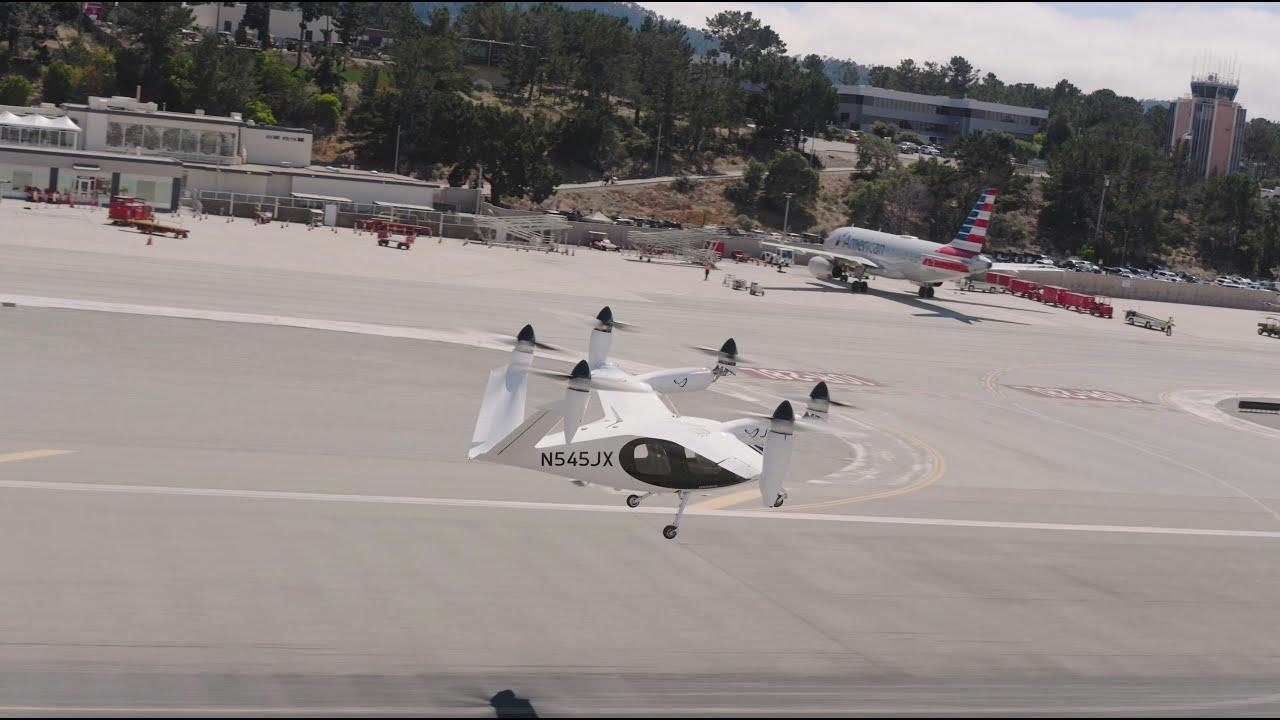
Archer’s Electric Aircraft Reaches 126 mph in 55-Mile Flight
Archer’s Electric Aircraft Achieves 126 mph in 55-Mile Piloted Flight
Archer Aviation has reached a pivotal milestone in the advancement of electric aviation with its flagship Midnight eVTOL aircraft completing its longest piloted flight to date. The company reported that the aircraft, carrying a pilot onboard, covered 55 miles in 31 minutes, reaching speeds of up to 126 miles per hour. This record-setting flight occurred in Salinas, California, a critical testing location for Archer’s development efforts.
Progress and Challenges in eVTOL Development
This achievement follows just two months after Archer initiated piloted test flights, highlighting the rapid progress made in refining the Midnight design. Archer emphasized that the flight not only demonstrates the aircraft’s range but also its operational reliability, positioning Midnight as a formidable contender in the burgeoning urban air mobility sector.
Despite these advancements, Archer faces significant challenges on the path to commercial deployment. Regulatory approval remains a major obstacle, as aviation authorities worldwide continue to develop certification frameworks tailored to eVTOL aircraft. Furthermore, Archer is navigating intense competition from other electric aircraft manufacturers such as Vertical Aerospace and Joby Aviation. These competitors are advancing their own piloted test programs and exploring hybrid-electric models to enhance range and performance.
Market Dynamics and Industry Response
The broader market is closely monitoring these developments, with growing anticipation surrounding early commercial operations and potential partnerships with third-party operators. Industry analysts suggest that substantial government incentives will be crucial to accelerate the adoption of electric aircraft and to support the necessary infrastructure for widespread use.
In response to Archer’s progress, competitors are actively forming strategic alliances and investing in new technologies aimed at improving aircraft capabilities and expanding market presence. As the race to commercialize electric aviation intensifies, Archer’s latest flight highlights both the promise and the complexities involved in bringing eVTOL technology into mainstream aviation.
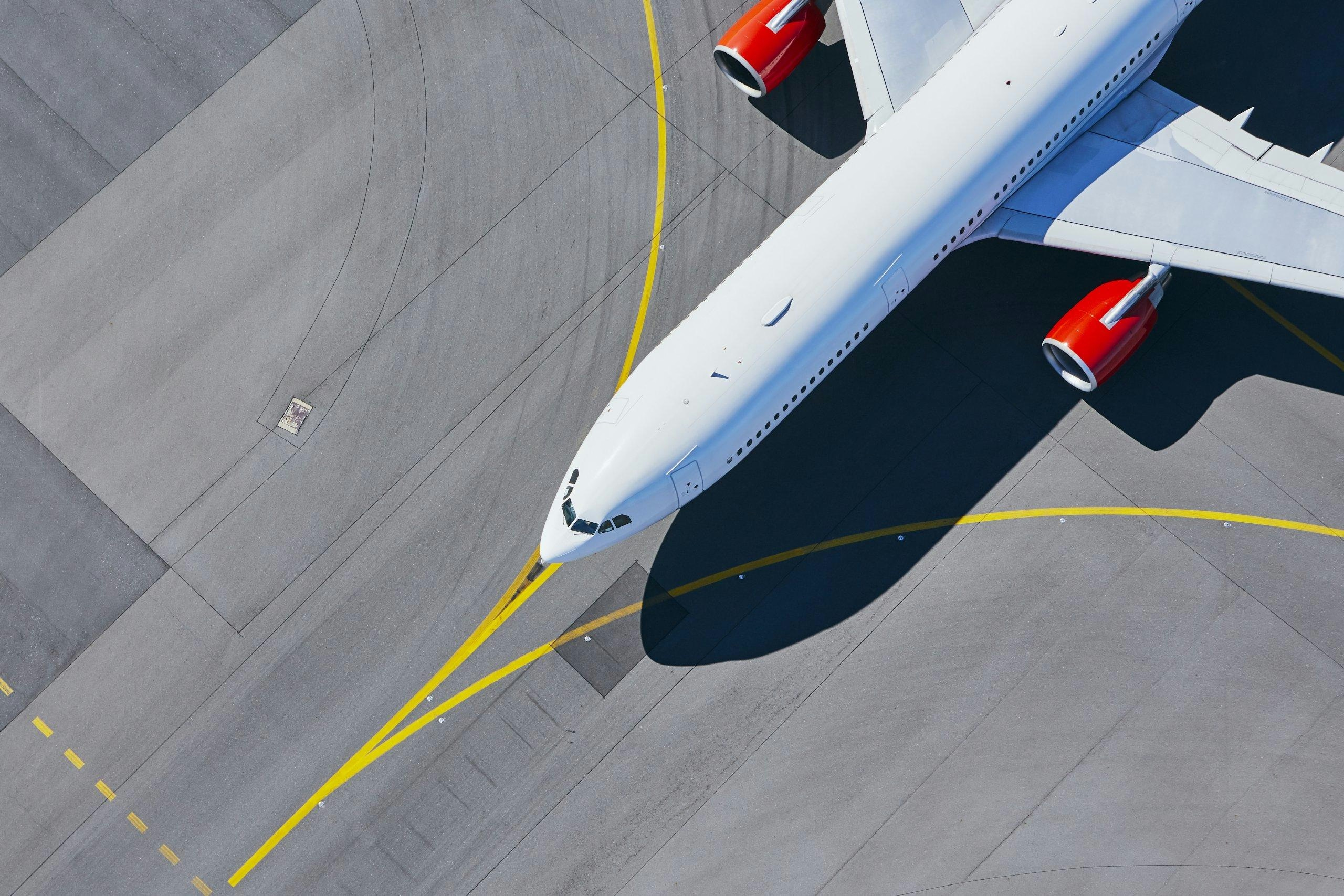
Castlelake Launches New Lending Arm to Support Airline Leasing
Castlelake Launches Merit AirFinance to Expand Aircraft Lending Amid Competitive Market
Castlelake has officially introduced Merit AirFinance, a new direct lending subsidiary designed to provide debt financing to airlines and lessors for both new and used aircraft. Operating independently with its own office and a dedicated origination team, Merit AirFinance is led by Patrick Mahoney, who has transitioned from Castlelake’s aviation capital markets division. This strategic move aims to address the evolving financing needs within the aviation sector amid a highly competitive environment.
Navigating a Competitive and Dynamic Aviation Finance Sector
The launch of Merit AirFinance comes at a time when the aviation finance market is marked by intense competition from established players such as Willis Lease Finance, recognized for its strategic agility and operational expertise. Industry analysts suggest that Merit AirFinance’s entry may prompt competitors to bolster their leasing and financing portfolios. For instance, KF Aerospace has recently expanded its aircraft maintenance and support services, reflecting a broader trend of diversification and growth within the sector.
This development also coincides with a period of uncertainty in global financial markets, where investor sentiment and capital availability are influenced by perceptions surrounding Federal Reserve leadership continuity. Merit AirFinance aims to offer flexible financing solutions that cater to airlines and lessors navigating these shifting market conditions.
Challenge Group’s Fleet Expansion and Financing Strategy
Among the airlines seeking innovative financing solutions is Challenge Group, which operates three cargo airlines—Challenge Airlines IL (Israel), Challenge Airlines BE (Belgium), and Challenge Airlines MT (Malta)—alongside its own maintenance and aviation services division. Ahead of the Ishka Investing in Aviation Finance: Japan conference in Tokyo this September, Challenge Group’s CFO Daniel Ganem and Chief Investment Officer Michael Koish detailed their plans for fleet expansion.
The group intends to add six aircraft over the next 18 to 24 months, comprising two leased Boeing 777s and four owned 777s. The four owned aircraft will be purchased outright with cash from the company’s balance sheet before being refinanced. Currently, Challenge Group operates four 767-300ERBDSFs and six 747-400Fs, with an owned 777-300ER undergoing conversion and expected to enter service early next year.
Regarding financing older aircraft, Ganem and Koish explained that the current borrowing balance stands at approximately $12 million per 767, with potential to increase to around $25 million. For 747s, offers have recently reached $37.5 million for a 747-400ERF variant. Each 777 is estimated to cost between $85 million and $90 million, with a current market value near $100 million. The group targets a loan-to-value ratio of 80 percent.
Despite volatility in the freight market, Challenge Group emphasizes its resilience, citing its unique operational model focused on high-barrier, low-competition niches. Their specialization in non-standard cargo, which is less susceptible to market cycles, combined with a balanced mix of new and older aircraft, allows them to adjust capacity flexibly. The group has maintained profitability since 2010, with only one exception.
Implications for the Aviation Finance Market
As Merit AirFinance enters the market, the competitive landscape is expected to intensify, with established firms likely to respond by enhancing their own financing and leasing offerings. The aviation finance sector will be closely monitoring how new entrants and evolving market dynamics influence the future of aircraft lending and leasing.
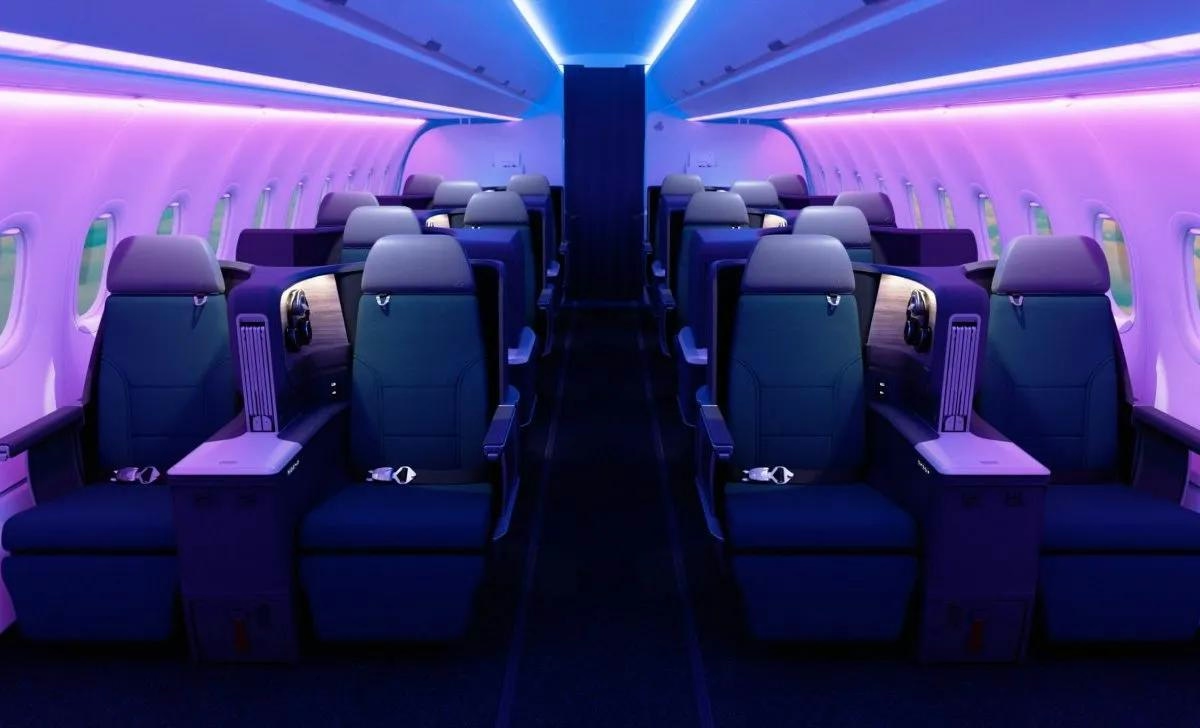
Three Technology Trends Set to Transform Aviation by 2030
Three Technology Trends Set to Transform Aviation by 2030
By 2030, the aviation industry is poised for a profound transformation, with flights increasingly managed by networks of autonomous systems operating in real time alongside human crews. Oleksandr Plyska, vice president of Sigma Software Group, emphasizes that the digital transformation of aviation is accelerating rapidly, with cybersecurity representing only the initial phase. To effectively prepare for the coming decade, industry leaders must prioritize three disruptive technologies: agentic artificial intelligence (AI), digital twins, and autonomous aircraft.
Agentic AI: Advancing Beyond Traditional Automation
Agentic AI represents the next stage in artificial intelligence development, moving well beyond the capabilities of conventional chatbots or copilots. Unlike traditional AI systems that respond solely to user prompts, agentic AI can independently take initiative, interact with external systems, and execute complex workflows without direct human intervention. This technology envisions virtual agents capable of managing multiple tasks simultaneously, such as booking routes, coordinating logistics, and performing diagnostics. Emerging standards like Anthropic’s Model Context Protocol facilitate the creation of modular, interconnected AI applications that communicate seamlessly with one another and with external systems. In the context of aviation, agentic AI could enable copilots to handle a broad spectrum of responsibilities, ranging from in-flight assistance to air traffic coordination.
Digital Twins: Enhancing Efficiency Through Virtual Replication
Digital twins—virtual replicas of aircraft, engines, and even entire airport facilities—are continuously updated with live data, allowing engineers to simulate repairs, predict potential failures, and optimize performance without physical intervention. According to the International Air Transport Association’s (IATA) 2024 report, the implementation of digital twins could reduce maintenance costs by up to 20% by 2030. However, widespread adoption faces significant challenges. Currently, 60% of digital twin projects fail, primarily due to high upfront costs, a figure that has increased from 40% in 2022. Despite these obstacles, the aviation sector remains committed to advancing this technology, drawing lessons from the software industry’s earlier transition to cloud computing and gradually overcoming initial setbacks.
Autonomous Aircraft: Charting the Next Frontier
Automation has already revolutionized critical phases of flight such as takeoff and landing. The forthcoming milestone is the development of fully autonomous commercial and cargo aircraft, powered by real-time data analytics, AI, and sophisticated sensor technologies. Although this technology remains in its nascent stages, progress is accelerating, and public confidence is slowly growing. Regulatory challenges and the complexities of integrating autonomous systems with existing infrastructure continue to pose significant barriers. Nonetheless, momentum within the industry is building steadily toward realizing this vision.
Navigating Challenges and Industry Responses
The integration of these transformative technologies is accompanied by considerable challenges. Regulatory frameworks must evolve to accommodate autonomous systems, while the substantial initial investments required for digital twins and advanced AI may deter some stakeholders. Technical difficulties related to integrating new technologies with legacy infrastructure further complicate adoption. Despite these hurdles, the market is responding proactively. Companies such as Beyond Gravity in Switzerland are intensifying research and development efforts, while competitors accelerate innovation and forge strategic partnerships. Regulatory bodies like the Federal Aviation Administration (FAA) have also signaled a commitment to modernization, exemplified by initiatives such as the roadmap toward lead-free aviation gasoline (Avgas) by 2030.
Preparing for the Future of Aviation
Industry leaders are encouraged to invest in robust AI systems that extend beyond superficial applications, focusing on agentic AI capable of delivering tangible operational improvements. The adoption of digital twins should be approached with a long-term perspective, emphasizing targeted implementations that demonstrate clear value and justify associated costs. Additionally, upskilling the workforce will be critical, as automation reshapes—not eliminates—the roles of pilots, mechanics, and ground personnel.
As these technological trends converge, the aviation industry stands on the threshold of a new era characterized by smarter systems, enhanced safety, and unprecedented operational efficiency.
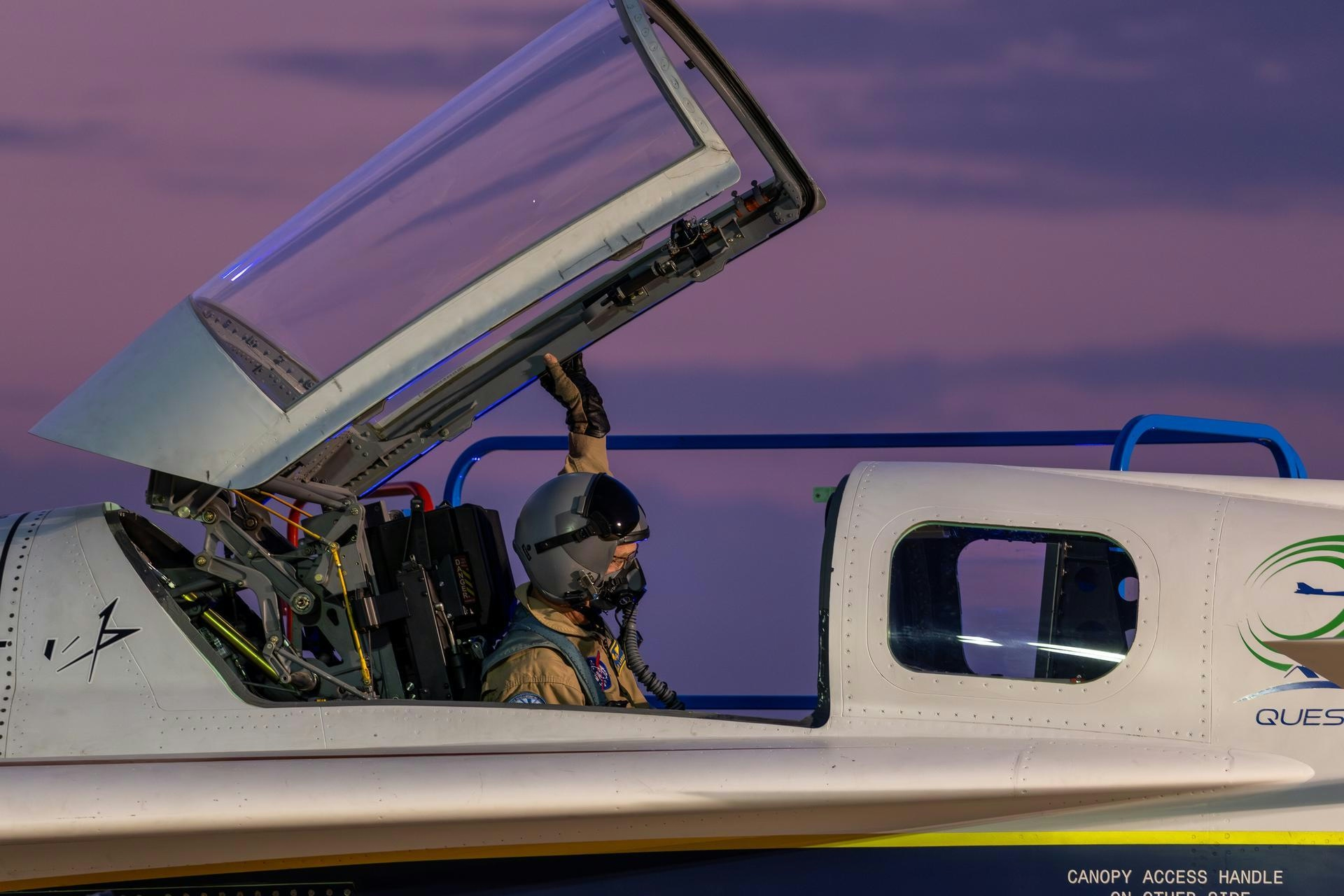
NASA Highlights Supersonic and Hypersonic Advances on National Aviation Day
NASA Highlights Supersonic and Hypersonic Advances on National Aviation Day
National Aviation Day, observed annually on August 19, commemorates the transformative legacy of flight and honors the pioneering innovators who have shaped the field. This year, NASA’s critical contributions to aviation technology are prominently featured, underscoring both its historic milestones and its ongoing efforts to redefine the future of air travel.
A Legacy of Innovation in Supersonic and Hypersonic Flight
NASA’s origins trace back to 1915 with the establishment of the National Advisory Committee for Aeronautics (NACA), an organization instrumental in achieving key aviation breakthroughs. Under NACA’s guidance, the United States broke the sound barrier in 1947 and developed the reusable hypersonic X-15 aircraft, which played a foundational role in the Mercury, Gemini, and Apollo space programs. The transition from NACA to NASA marked a continuation of this innovative spirit, characterized by close collaboration with the Department of Defense and industry partners. These partnerships not only advanced supersonic and hypersonic flight capabilities but also laid the groundwork for future aerospace developments.
In response to a decline in the U.S. general aviation sector during the late 20th century, NASA launched the Advanced General Aviation Transport Experiments (AGATE) consortium. This initiative fostered significant improvements in safety and efficiency by introducing advanced cockpit displays and modern manufacturing techniques. The resulting technological advancements contributed to the creation of aircraft such as the Cirrus SR20 and SR22, revitalizing the general aviation industry and demonstrating the tangible benefits of NASA-driven research.
Current Endeavors and Challenges in High-Speed Aviation
NASA’s present focus on high-speed flight is embodied in the X-59 Quesst project, which seeks to revolutionize supersonic travel by substantially reducing the sonic boom. The X-59 is anticipated to demonstrate its quiet flight capabilities later this year, potentially influencing new regulatory frameworks and enabling commercial applications. Despite this progress, significant challenges remain. Regulatory obstacles, public concerns regarding noise pollution, and technological complexities related to safe and sustainable supersonic travel continue to pose hurdles. While recent executive orders and NASA’s advancements in quiet supersonic technology have rekindled interest in the sector, the commercial viability of supersonic passenger flights remains uncertain. Market responses are divided; some investors are optimistic about the prospect of drastically reduced travel times, whereas others express caution over economic and environmental considerations. Concurrently, both established aerospace firms and emerging startups are investing heavily in supersonic projects, intensifying competition within the field.
Beyond supersonic flight, NASA’s research extends into hypersonic technologies, building upon the legacy of the X-15 and supporting national security objectives as well as the potential for ultra-fast civil transportation. Current efforts encompass propulsion systems, additive manufacturing, and automated air traffic management. NASA collaborates closely with the aerospace industry and regulatory agencies to integrate these cutting-edge advancements into the evolving landscape of modern aviation.
National Aviation Day thus serves not only as a celebration of past achievements but also as a call to action for the future. As the U.S. aviation sector approaches breakthroughs in aerodynamics, sustainability, and airspace management, NASA’s unwavering commitment to innovation ensures that the nation remains at the forefront of global aviation. Through ongoing partnerships with the Federal Aviation Administration and industry stakeholders, the vision of faster, safer, and more sustainable flight continues to inspire the next generation of aerospace progress.

Air Botswana Extends Suspension of General Manager
Air Botswana Extends Suspension of General Manager Amid Investigation
Air Botswana’s newly appointed board has extended the administrative leave of General Manager Lulu Rasebotsa for an additional 30 working days as an internal investigation into alleged mismanagement and operational inefficiencies continues. Rasebotsa, who was initially suspended for 30 days beginning June 30, 2025, remains on leave following the expiration of the original suspension period without a resolution, according to ch-aviation sources.
Challenges in the Investigation Process
The investigation was initiated shortly after the new board took office on June 27. However, the process has encountered significant obstacles. Reports from the Botswana Guardian indicate that the board’s efforts have been hindered by internal barriers, including restricted access to critical information due to company policies requiring legal vetting and management approval. Additionally, some employees have been reluctant to cooperate, possibly because of their involvement in prior decisions or advisory roles to Rasebotsa.
An Air Botswana spokeswoman confirmed the extension of Rasebotsa’s administrative leave but declined to provide further details. Rasebotsa herself has not issued any public statements regarding the ongoing investigation.
Implications for Air Botswana’s Future
This leadership uncertainty arises at a pivotal moment as Air Botswana pursues a comprehensive turnaround strategy under the guidance of the new board. The prolonged suspension of the general manager may present operational challenges, particularly in sustaining staff morale and managing ongoing projects. Industry analysts warn that such instability could invite increased scrutiny from stakeholders and passengers, raising concerns about the airline’s stability and strategic direction.
Competitors may seek to exploit Air Botswana’s internal difficulties by offering more competitive pricing or enhanced services to attract its customer base. Furthermore, the situation could attract regulatory attention, potentially pressuring the airline to address operational shortcomings promptly to restore public confidence and market trust.
The new board is chaired by Dane Kondić, former CEO of Air Serbia and euroAtlantic Airways. Kondić’s appointment has generated controversy due to his simultaneous role as chairman of the management committee at regional rival LAM - Linhas Aéreas de Moçambique. This leadership shake-up, coupled with the ongoing investigation, highlights the significant challenges Air Botswana faces as it strives to stabilize operations and implement its turnaround plan.

Cathay Pacific: Reimagining Aviation's Future Through Premium Innovation and Strategic Resilience
Cathay Pacific: Reimagining Aviation’s Future Through Premium Innovation and Strategic Resilience
As global travel recovers from the pandemic, airlines face the complex task of restoring profitability while addressing increasingly sophisticated customer expectations. Cathay Pacific, Hong Kong’s flagship carrier, exemplifies how operational innovation combined with a focus on premium service can generate sustainable value. Through strategic cost management, digital transformation, and investment in luxury experiences, the airline is not merely recovering but actively positioning itself as a leader in the evolving aviation industry.
Operational Innovation and Resilience
Cathay Pacific’s post-pandemic approach integrates pragmatic cost optimization with technological advancement. Between 2023 and 2025, the airline reduced its flight capacity by 30%, consolidated subsidiaries including Cathay Dragon, and implemented voluntary unpaid leave for approximately 27,000 employees, reflecting measures reminiscent of its 2009 crisis response. Executive salary reductions and a transition to more fuel-efficient aircraft, such as the Airbus A330neo, have further contributed to stabilizing cash flow and lowering unit costs.
A cornerstone of Cathay’s strategy is its digital transformation. Partnering with Trax, the airline digitized its engineering operations through the adoption of eMRO software, streamlining maintenance processes and reducing reliance on paper-based systems. This innovation not only curtails expenses but also enhances operational reliability, a critical factor in maintaining customer trust in an industry where delays can significantly impact reputation. The 2024 launch of the Cathay Pacific mobile application has further improved the passenger experience by providing real-time communication, baggage tracking, and digital check-in capabilities.
Nonetheless, the airline’s innovation drive faces challenges. The ongoing restructuring of its HK Express network introduces operational complexities and heightens competition as Cathay seeks to optimize its regional presence.
Elevating the Premium Experience
In an increasingly commoditized market, Cathay Pacific has intensified its focus on premium differentiation. The reopening of its Beijing Capital Lounge in 2025 serves as a prime example of this strategy. Covering more than 9,000 square feet, the lounge combines cultural authenticity with contemporary luxury, featuring regional cuisine at the Noodle Bar, premium Chinese teas at the Teahouse, and curated art installations by Dr. Henrietta Tsui-Leung. These elements reinforce Cathay’s brand identity while enhancing the overall customer journey.
This premium offering supports Cathay’s robust network, including seven daily return flights between Hong Kong and Beijing and over 300 weekly return flights to 23 mainland destinations during peak periods. By delivering a seamless travel experience from airport to aircraft, the airline captures ancillary revenue through lounge access, dining, and loyalty programs, while cultivating repeat business among discerning travelers.
Strategic Positioning Amid Market Dynamics
Cathay’s concentrated focus on the Chinese mainland is underpinned by a HK$100 billion investment in lounges, fleet renewal, and digital infrastructure. The airline’s commitment to expanding its Boeing 777-9 orders signals a long-term vision for fleet modernization, though it also presents logistical and financial challenges. This move is likely to prompt competitors to accelerate their own fleet upgrades, intensifying competition for market share within Asia’s aviation sector.
Market response to Cathay’s recent profit increase—driven by higher passenger volumes and reduced fuel costs—has been favorable. However, as the airline advances its fleet expansion and network realignment, it must carefully balance innovation with operational discipline to sustain its competitive advantage.
By integrating premium service, digital innovation, and strategic investment, Cathay Pacific is redefining its future, illustrating how resilience and forward-thinking can reshape success in the global aviation industry.

Inside Delta Air Lines’ Premium Boeing 757s
Inside Delta Air Lines’ Premium Boeing 757s
Atlanta-based Delta Air Lines is among the world’s largest carriers, operating over 5,400 daily flights to 325 destinations across 52 countries. As a founding member of the SkyTeam Alliance, Delta has expanded its global footprint through strategic partnerships, reinforcing its standing both domestically and internationally. Established in 1925, Delta is the second-oldest airline in the United States and currently operates from nine major hubs, including Atlanta, Boston, Detroit, Los Angeles, Minneapolis/St. Paul, New York–JFK, New York–LaGuardia, Salt Lake City, and Seattle/Tacoma, alongside focus cities such as Austin and Raleigh/Durham.
The Boeing 757 and Delta’s Premium Offering
Delta’s fleet comprises a mix of Airbus and Boeing aircraft, with the Boeing 757-200 playing a pivotal role. The airline is the world’s largest operator of the 757, maintaining four distinct configurations tailored to different service needs. Among these, the 75S variant is notable for its premium Delta One cabin, which features lie-flat seating and a range of exclusive amenities designed to enhance the passenger experience. Travelers in Delta One benefit from access to dedicated lounges, chef-curated dining options, luxury bedding crafted by the Italian fashion house Missoni, and flexible ticketing on select routes.
The premium experience extends beyond the aircraft. At the airport, Delta One passengers enjoy Sky Priority check-in, expedited security screening, and access to Delta Sky Club lounges. Select airports, including New York JFK, Los Angeles, Boston, and Seattle, offer Delta One Lounges that provide additional comforts such as wellness rooms and specialty dining, underscoring Delta’s commitment to a seamless and elevated travel experience.
Operational Challenges and Fleet Modernization
While Delta continues to invest in upgrading the interiors of its 757 fleet, the airline is gradually replacing older aircraft with new Airbus A321neo models as part of its broader fleet modernization strategy. However, recent operational challenges have drawn attention. An engine incident involving a Delta Boeing 767 has prompted scrutiny from aviation authorities and raised concerns about fleet safety, potentially affecting passenger confidence. Additionally, the arrest of a Delta 757 pilot at San Francisco Airport has intensified public relations challenges, highlighting the complexities of maintaining operational integrity in a highly competitive industry.
These incidents have provided competitors with opportunities to emphasize the reliability of their own fleets, increasing pressure on Delta to reinforce its safety protocols and operational standards. Despite these hurdles, Delta’s dedication to premium service remains clear, particularly through its Delta One offering aboard the 757. The airline continues to navigate the balance between fleet modernization and delivering a superior passenger experience, striving to maintain its reputation as a leader in both domestic and international air travel.

US Reactor Converts Cow Manure into Jet Fuel at Reduced Cost
US Reactor Converts Cow Manure into Jet Fuel at Reduced Cost
Innovative Technology Transforms Agricultural Waste
Circularity Fuels has developed a groundbreaking reactor that converts cow manure into jet fuel at a fraction of the traditional cost, potentially revolutionizing the economics of sustainable aviation fuel (SAF). This new system operates at just one one-hundredth of the capital cost associated with conventional technologies, making on-site fuel production feasible for individual farms. Such a development could significantly alter the landscape of renewable fuel production by decentralizing the process and empowering farmers to become direct contributors to the aviation fuel supply chain.
Untapped Potential in Livestock Waste
In the United States alone, over 20,000 large livestock farms produce nearly a trillion pounds of manure annually. Despite this vast quantity, less than 6% of the biogas generated from this waste is currently captured and utilized. Dr. Stephen Beaton, CEO and Founder of Circularity Fuels, emphasized the opportunity this represents: “Farmers in the U.S. and around the world are sitting on an untapped goldmine. We’re giving them the ability to turn waste into a profitable product that airlines desperately need.” By harnessing this resource, the technology could not only provide a new revenue stream for farmers but also contribute to the growing demand for sustainable aviation fuels.
Challenges and Market Implications
Sustainable aviation fuel has traditionally been produced in large, centralized facilities, often hindered by high capital costs and logistical complexities. The compact design and reduced capital requirements of Circularity Fuels’ reactor could enable widespread adoption at the farm level, increasing the availability of renewable jet fuel and reducing the aviation industry’s dependence on fossil fuels. However, significant challenges remain before the technology can achieve broad market penetration. Scaling production to meet the aviation sector’s demands will require substantial investment and coordination. Additionally, compliance with environmental regulations and maintaining cost competitiveness amid alternative renewable energy sources are critical factors that must be addressed.
The market’s growing interest in sustainable aviation fuels suggests that innovations like this could drive down prices and stimulate further technological advancements. Competitors may respond by enhancing their own waste-to-energy solutions or by developing alternative sustainable fuels, including hydrogen or synthetic fuels derived from plastic waste. If these obstacles are successfully navigated, the technology could unlock the vast potential of agricultural waste, transforming a persistent environmental challenge into a valuable asset for the clean energy transition.
Ask AeroGenie